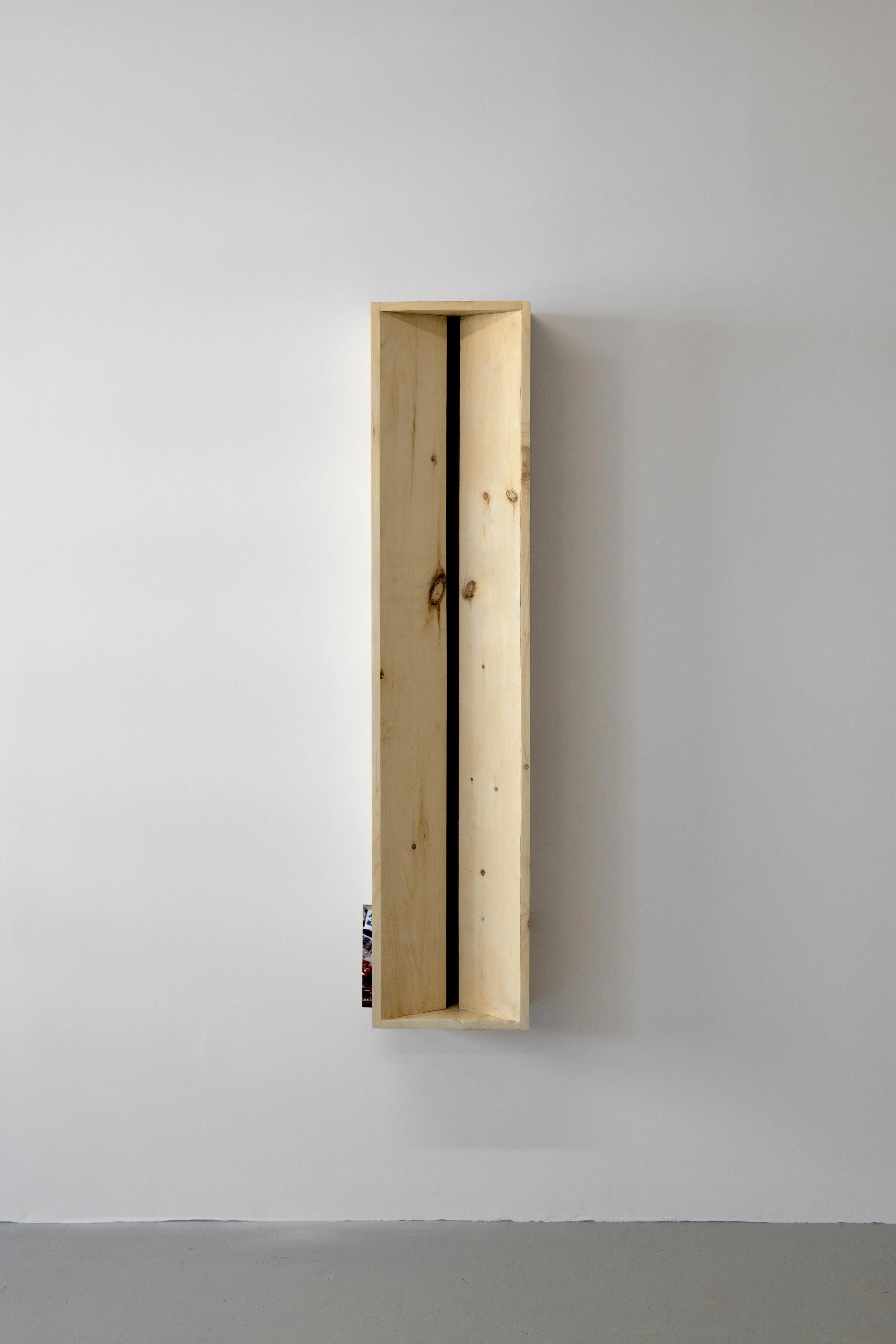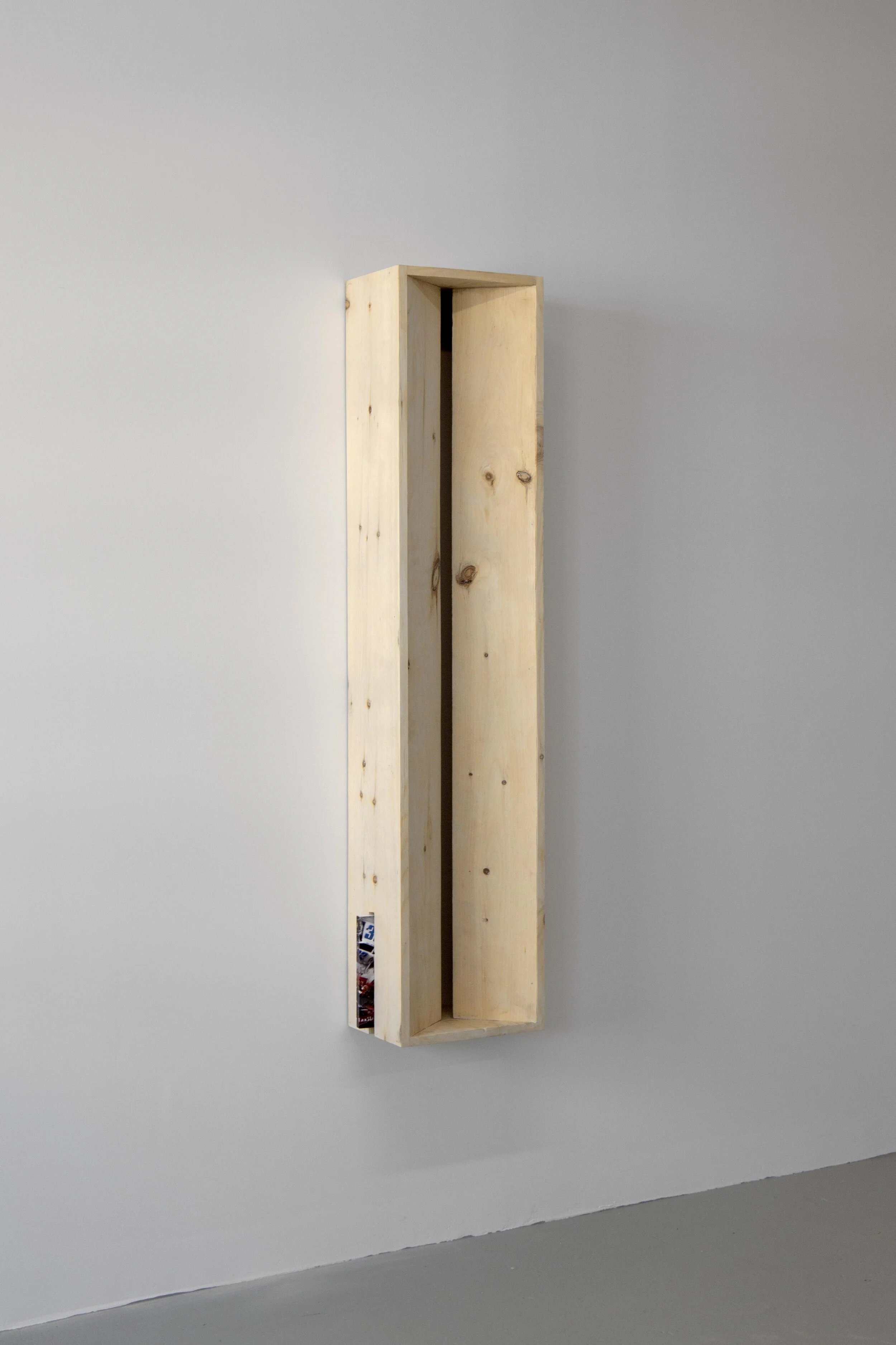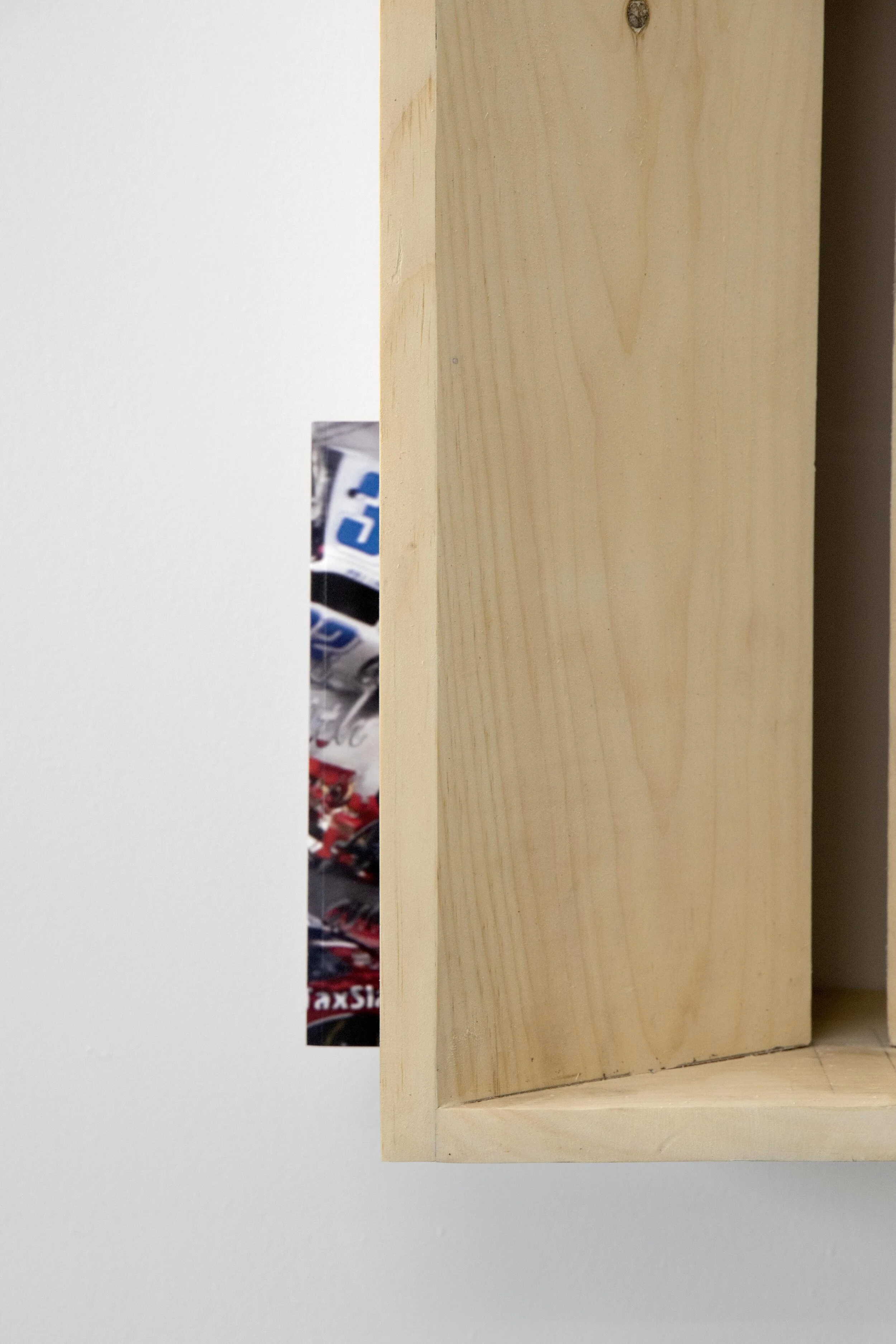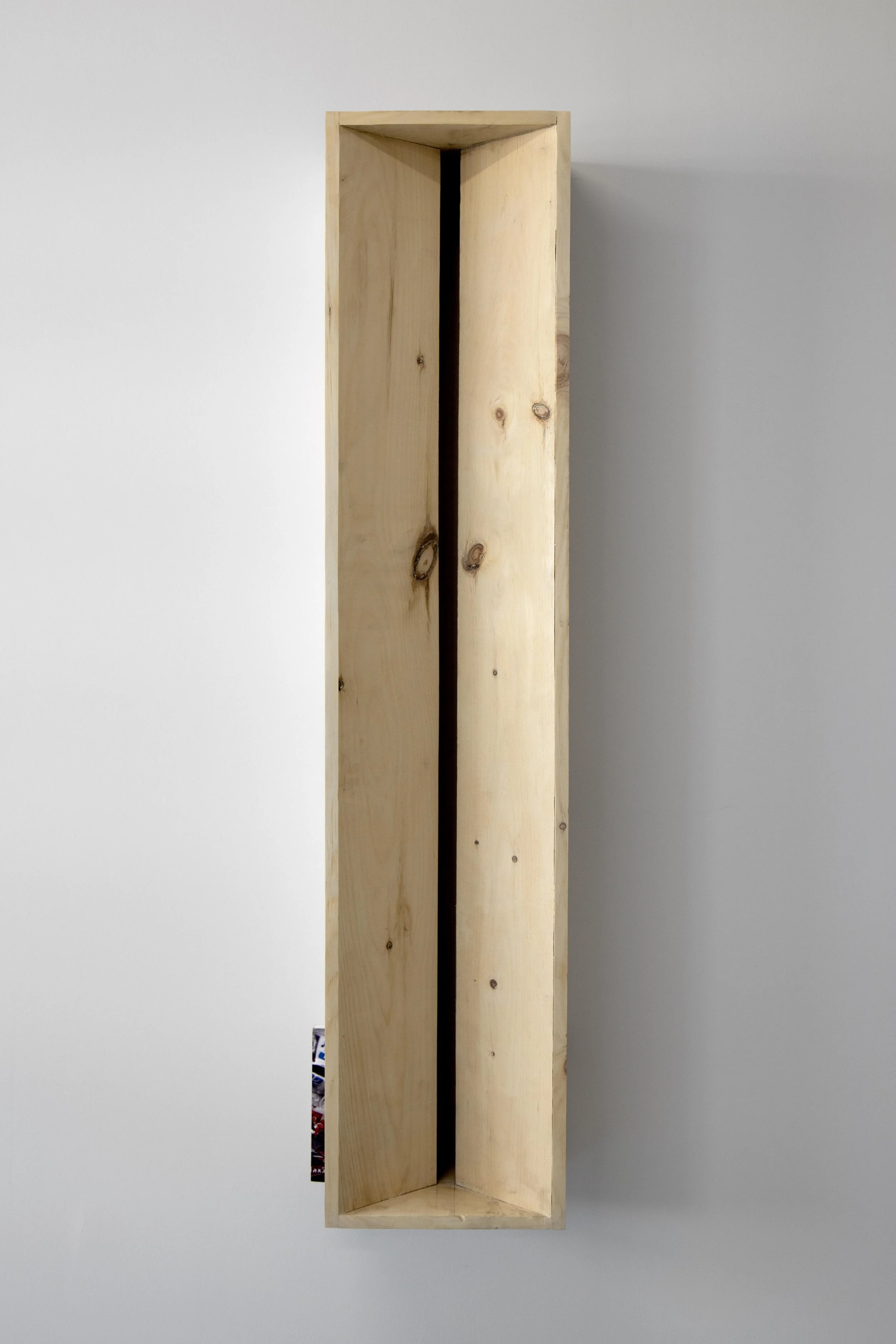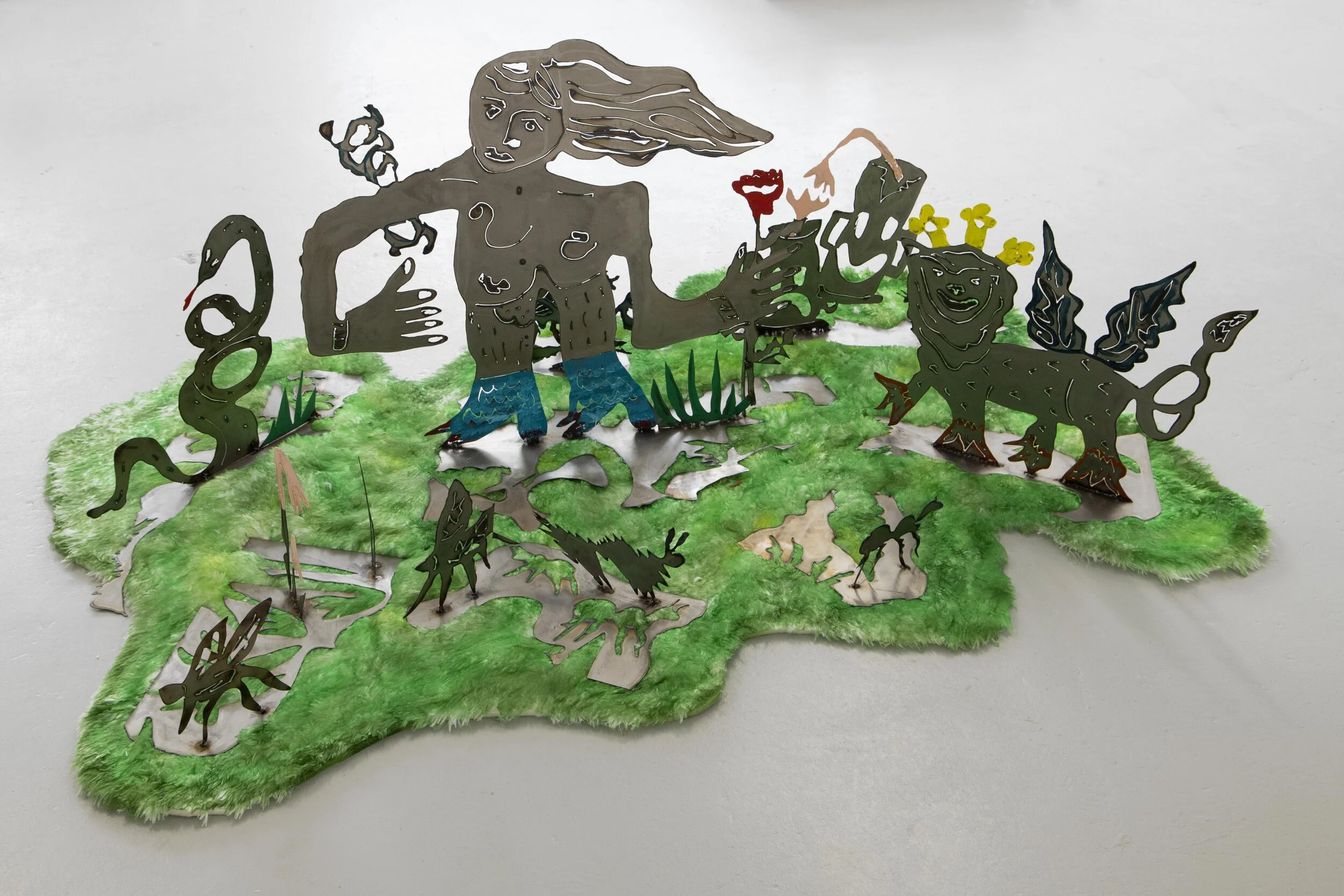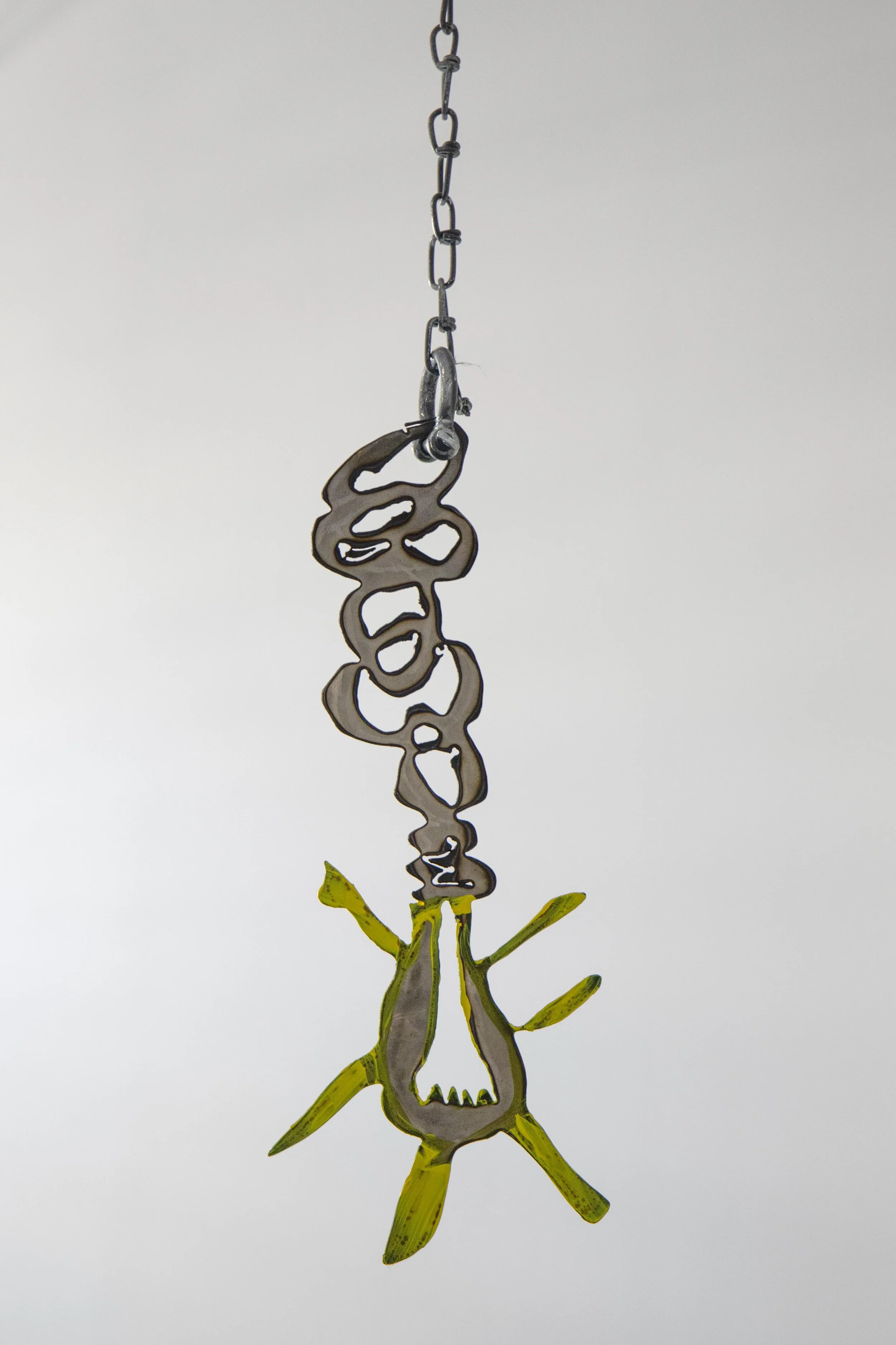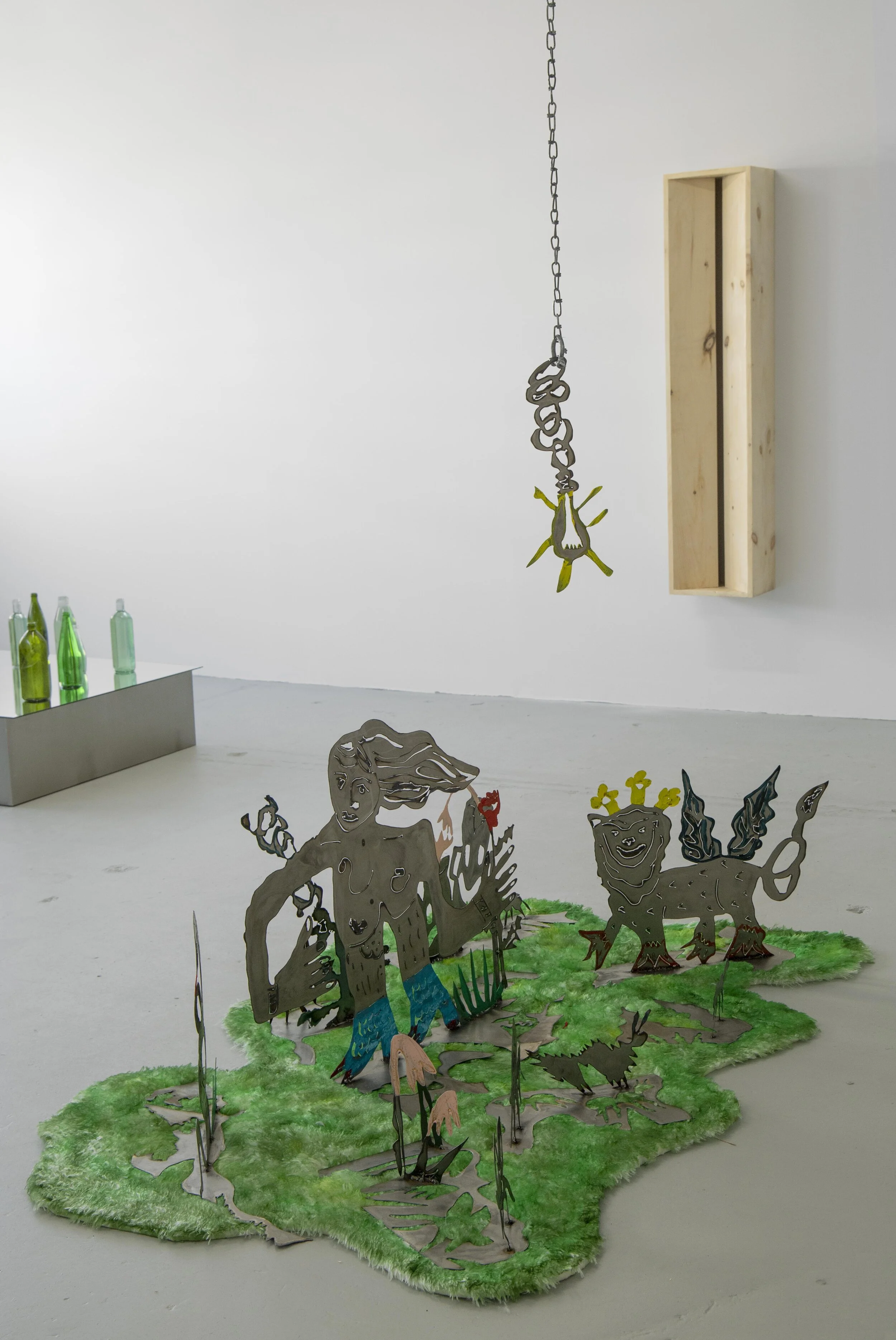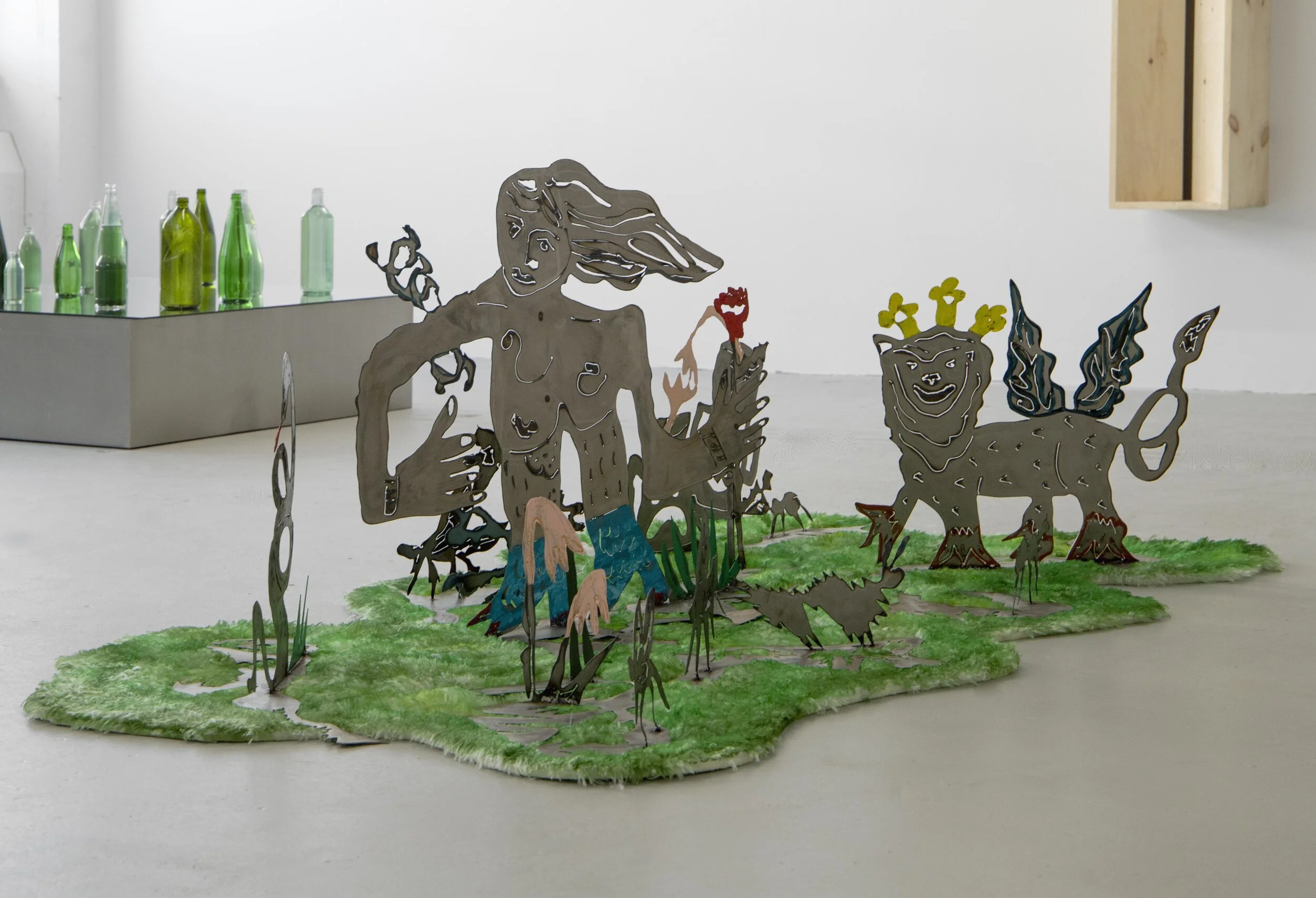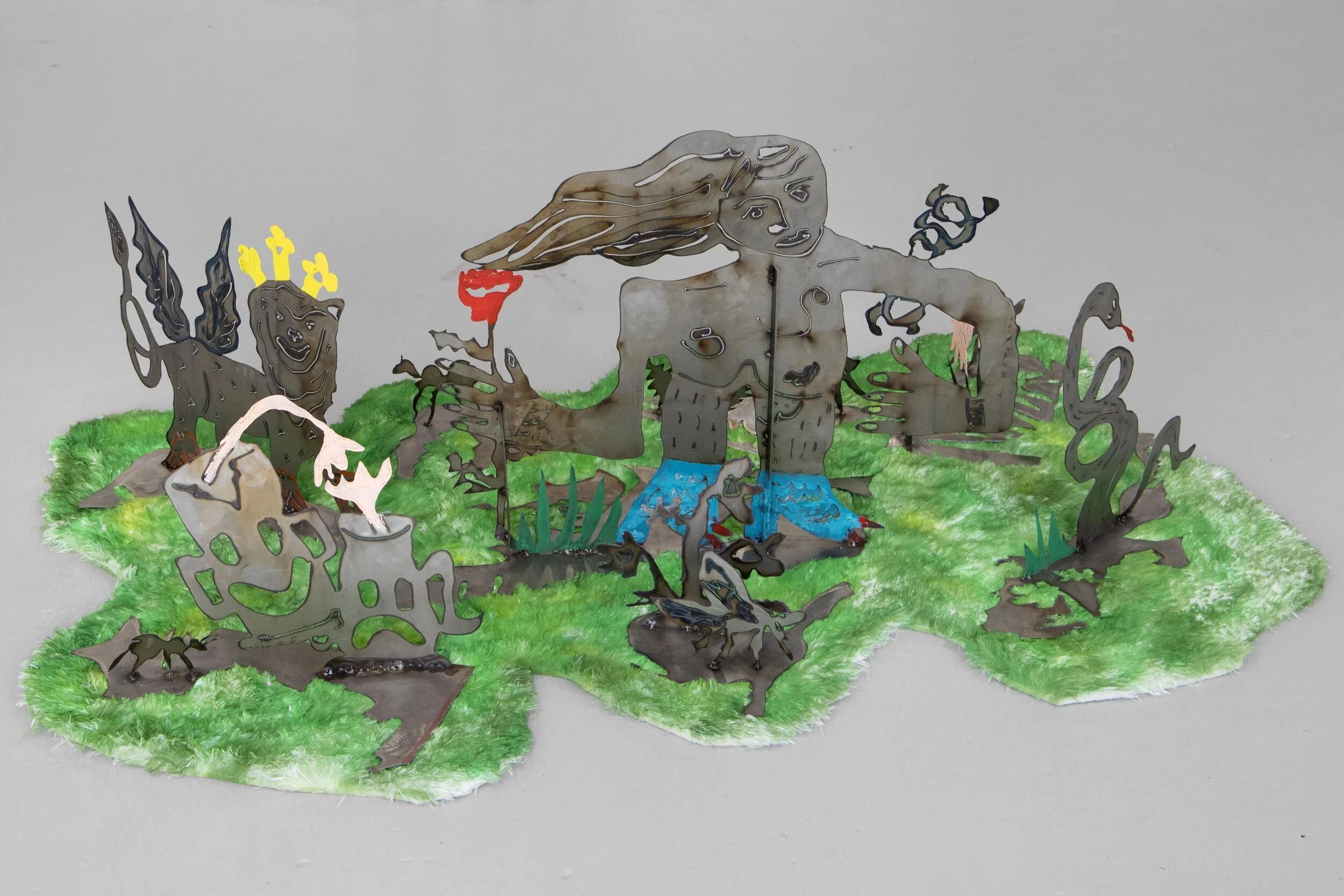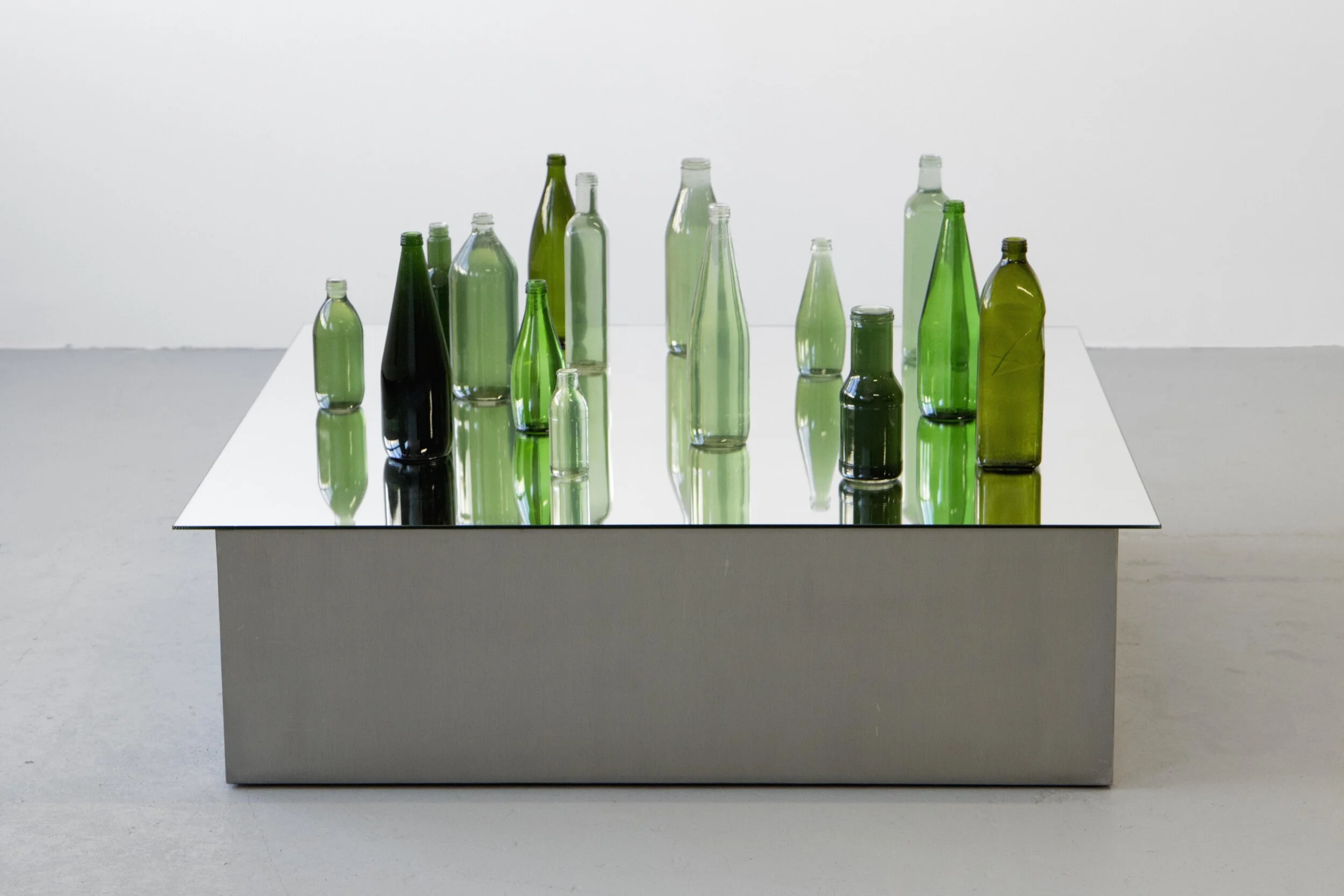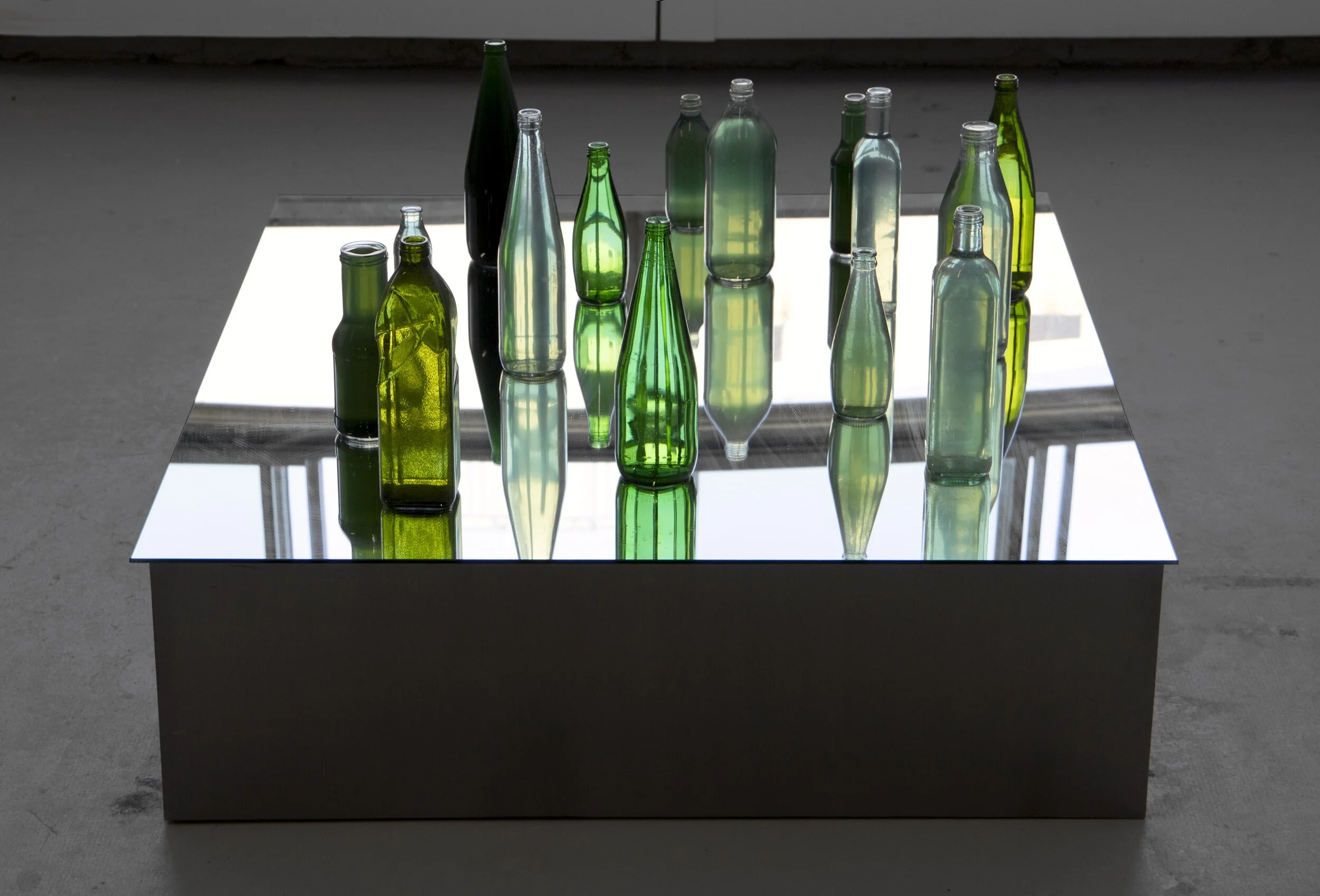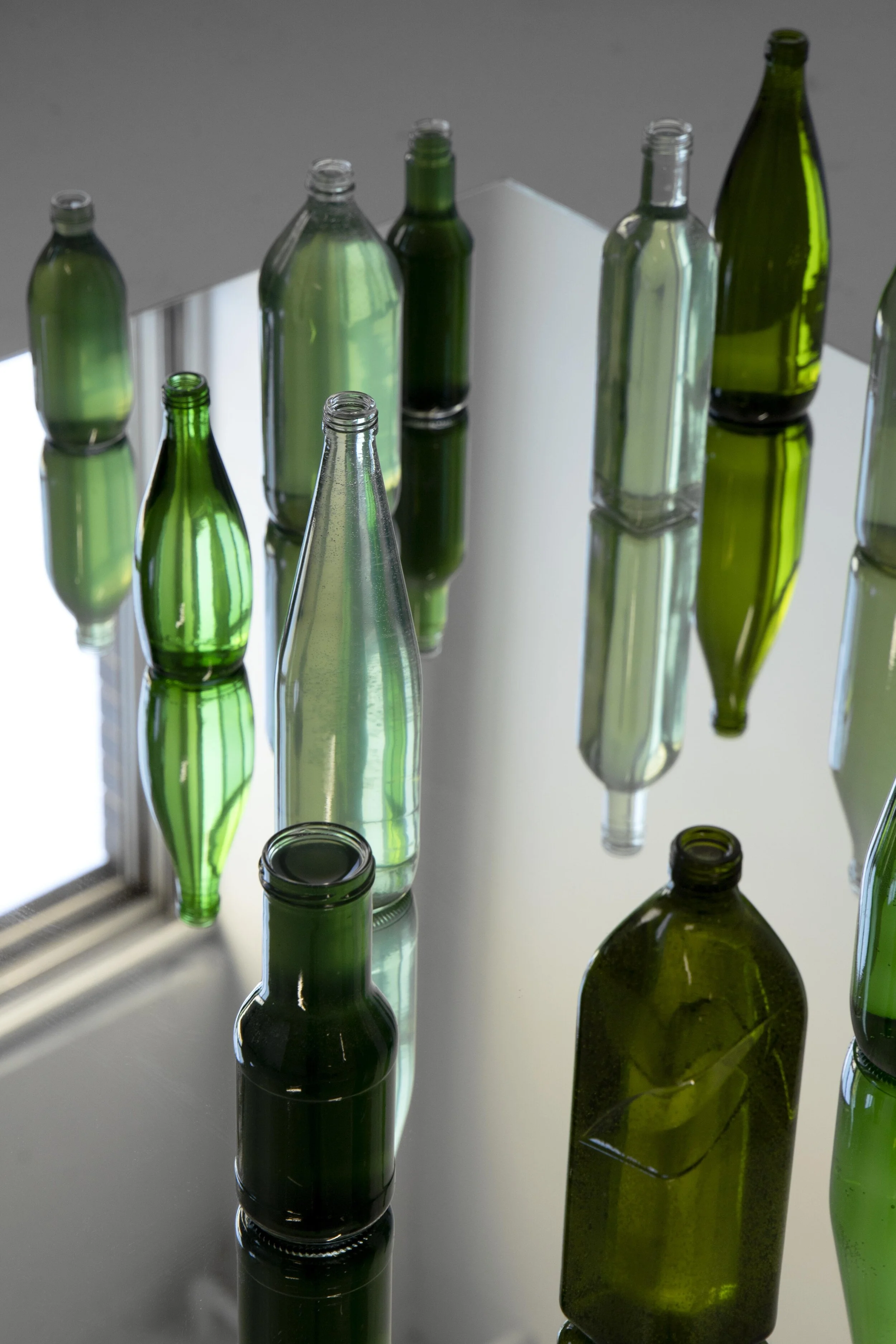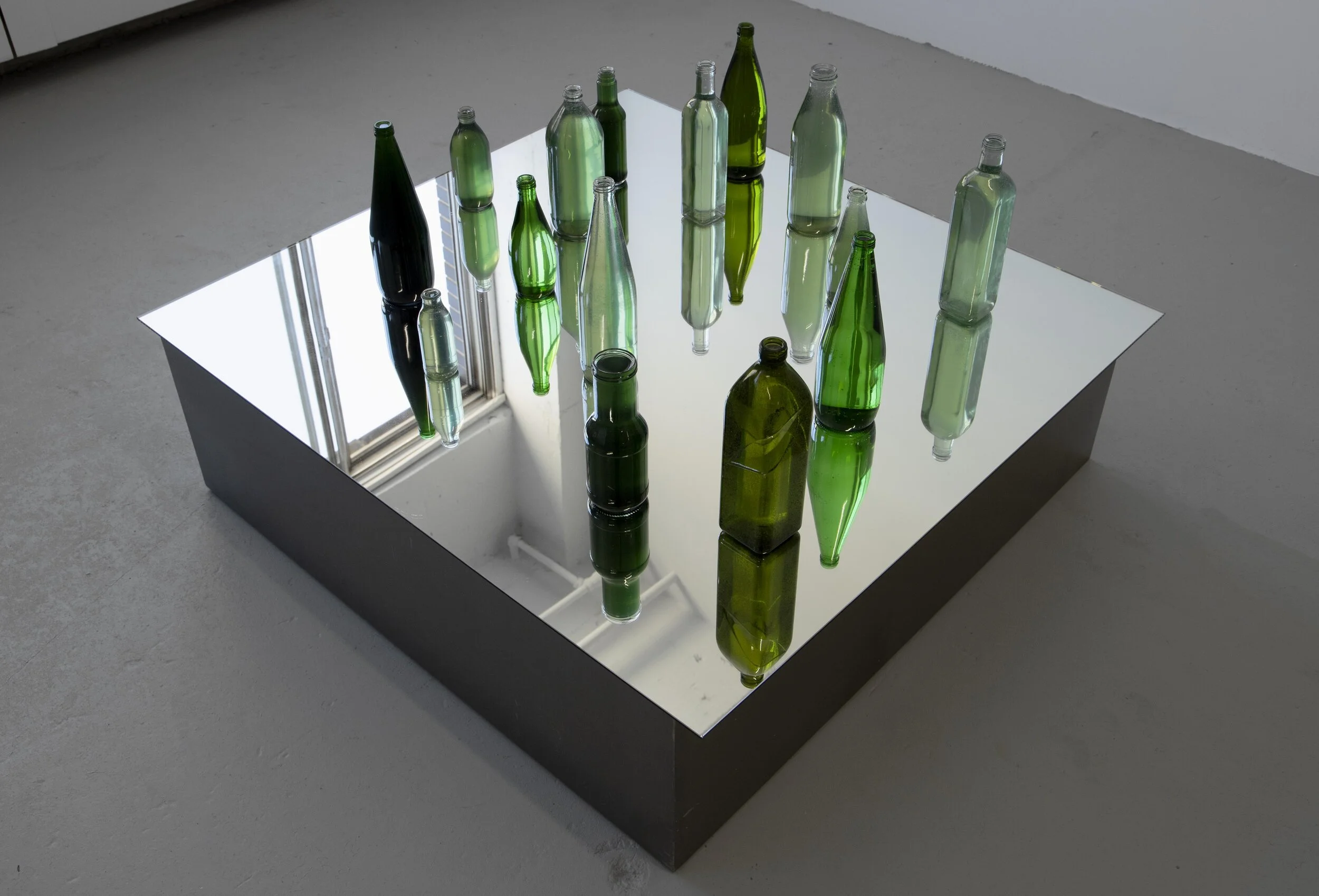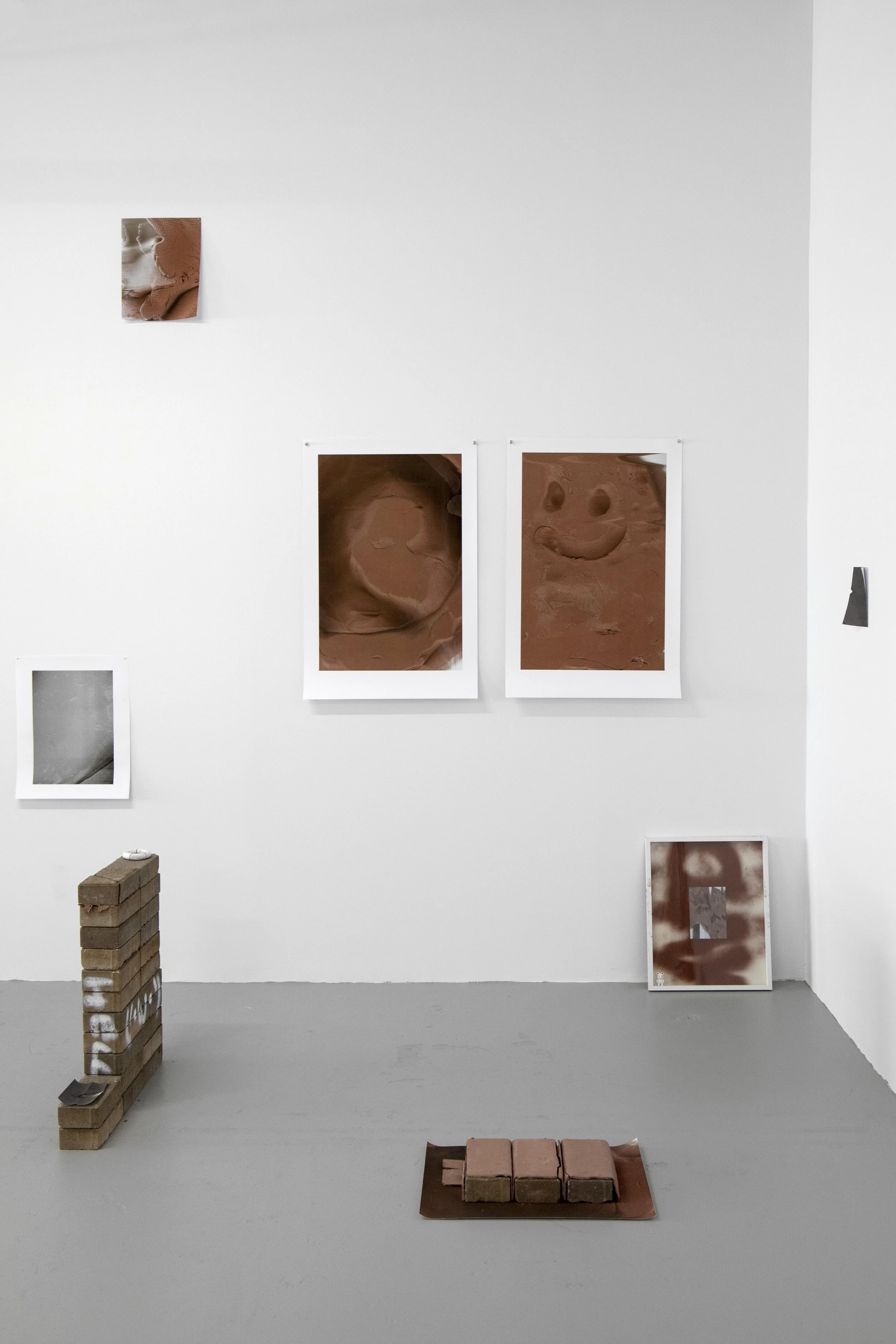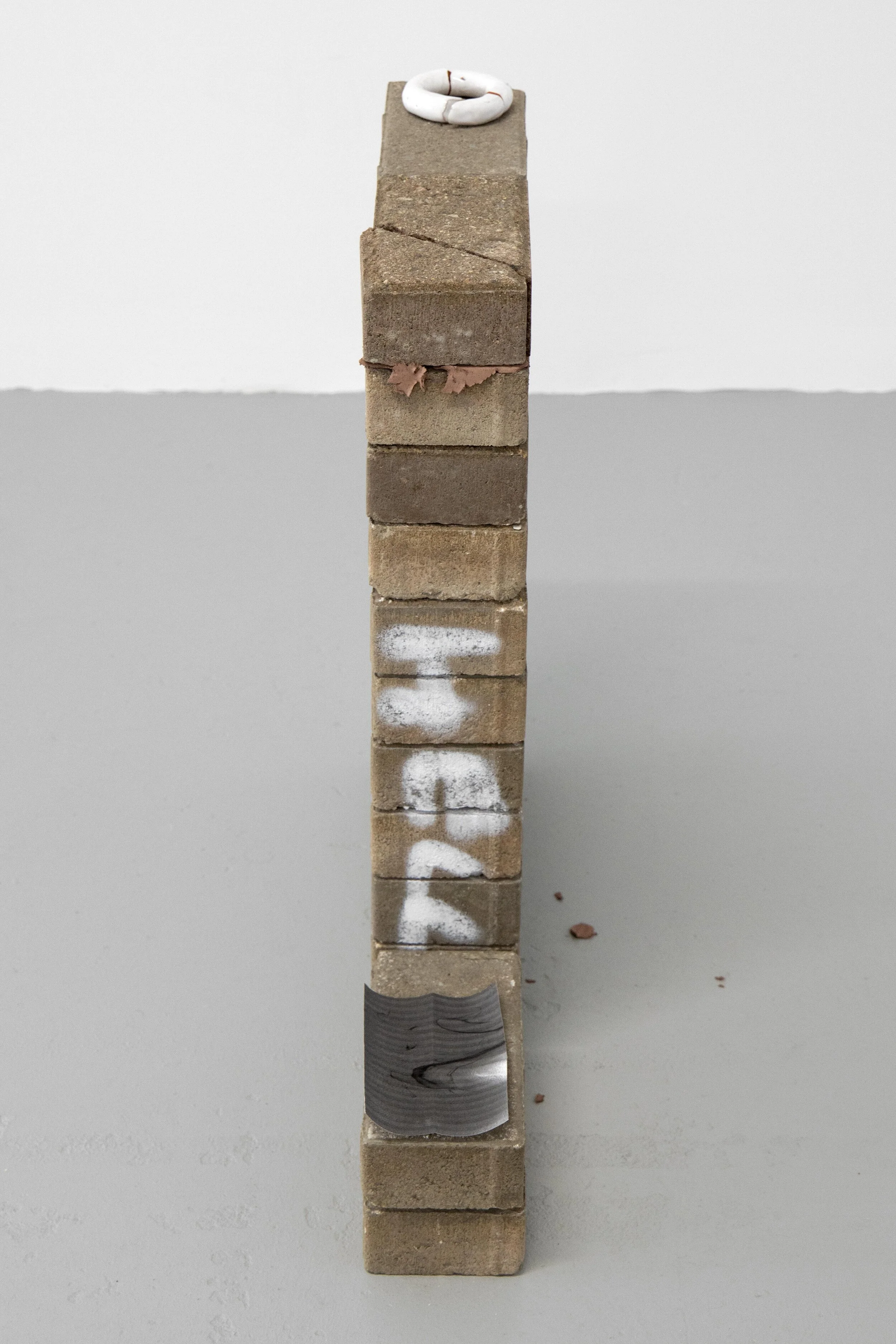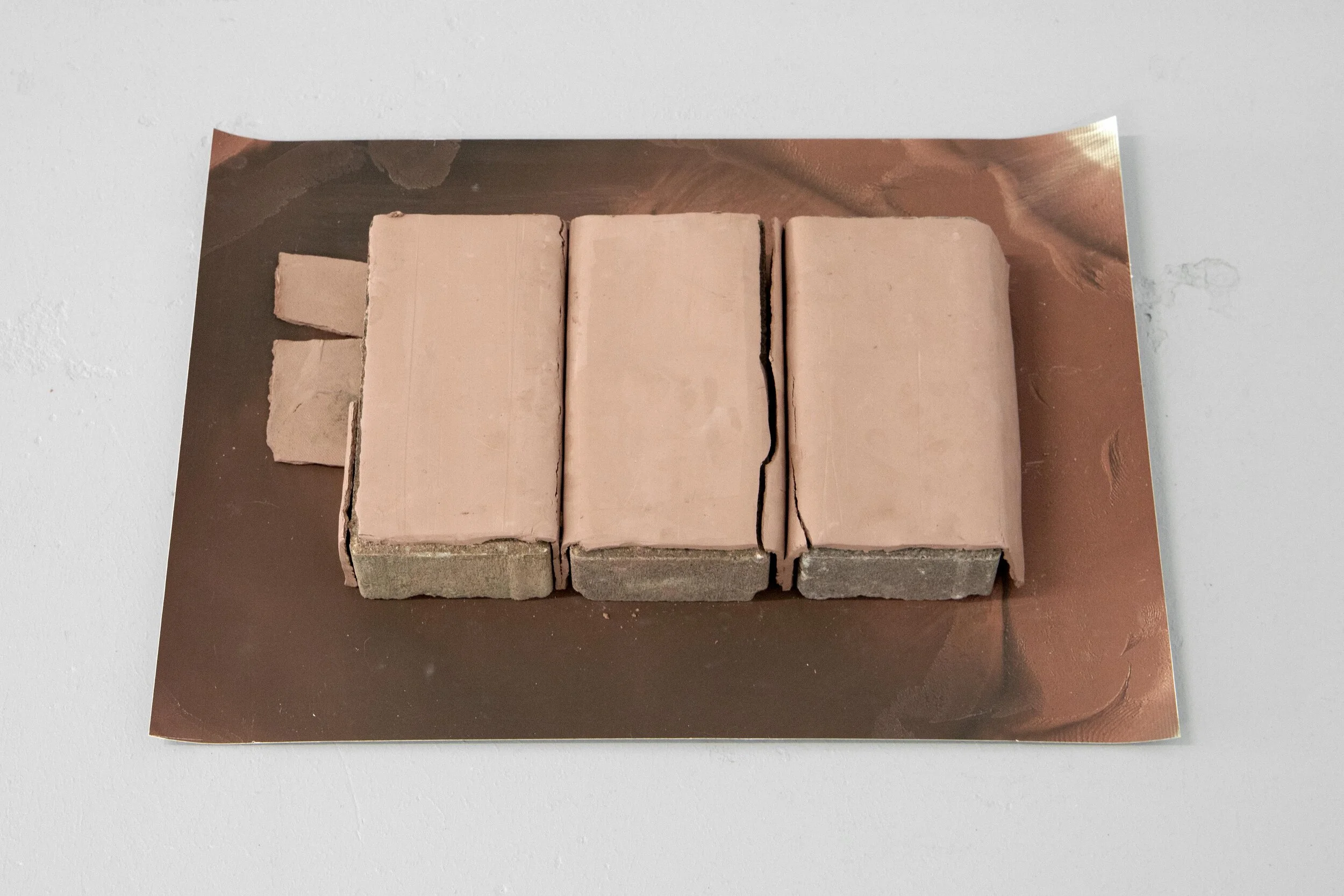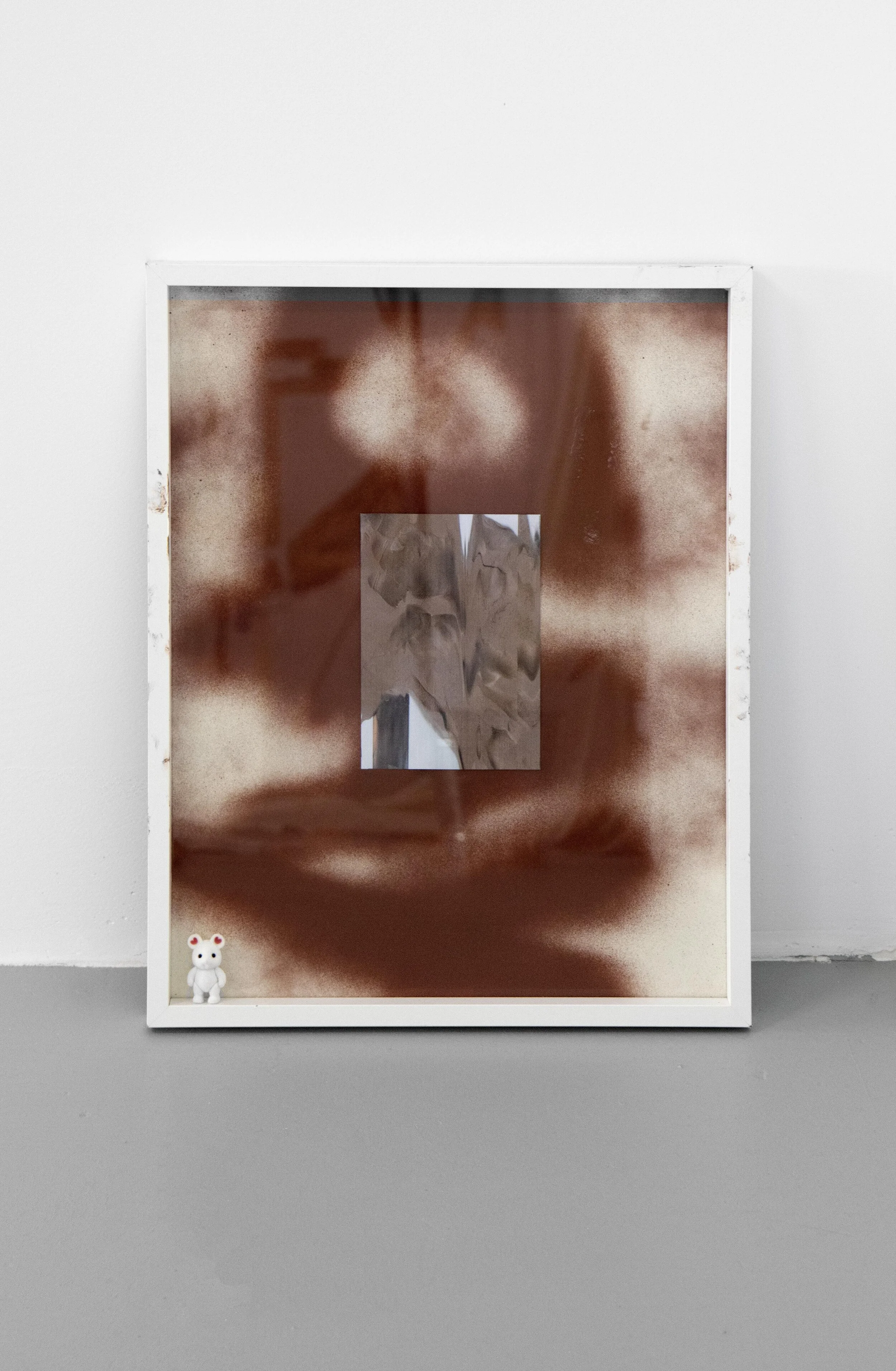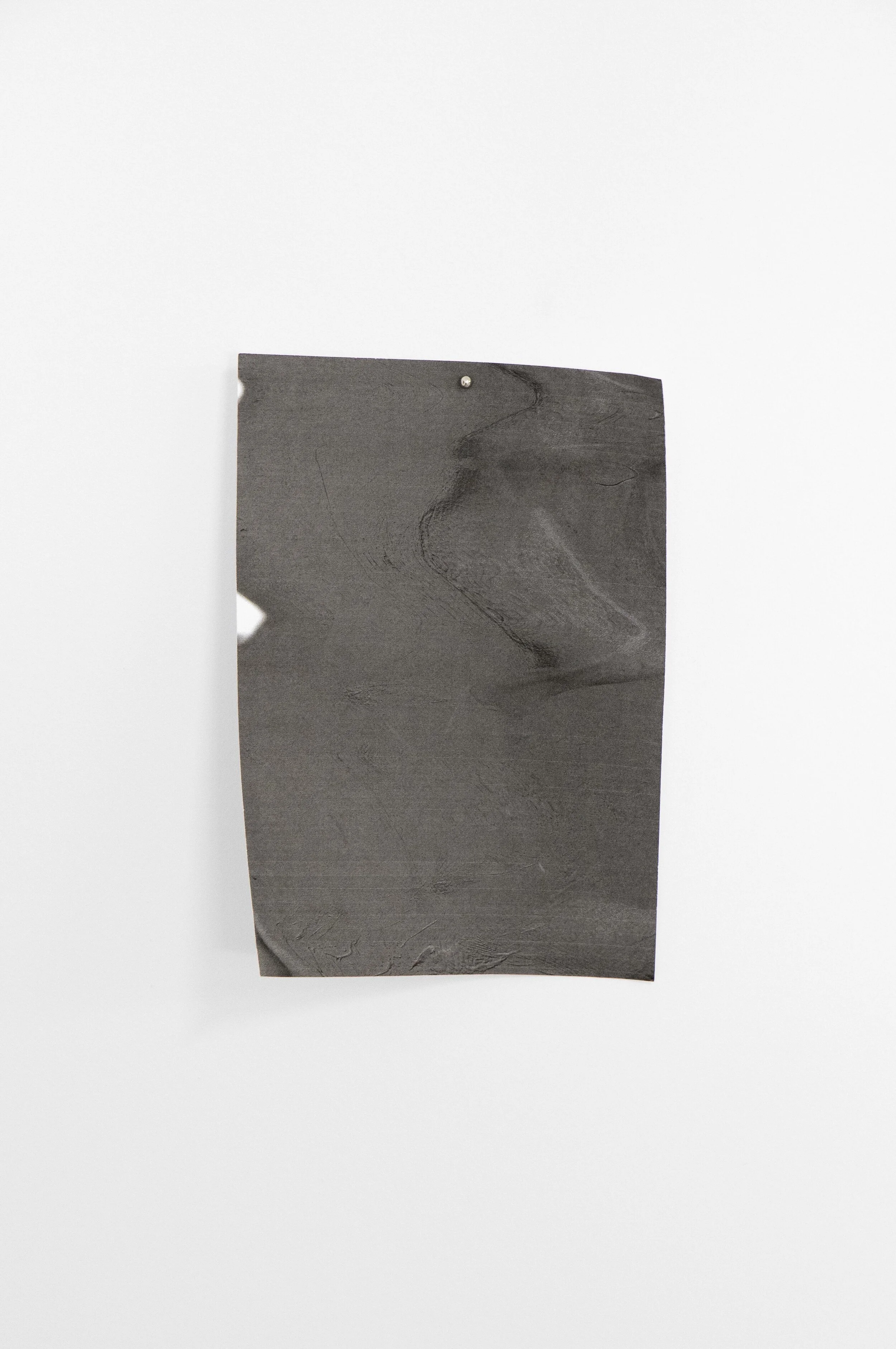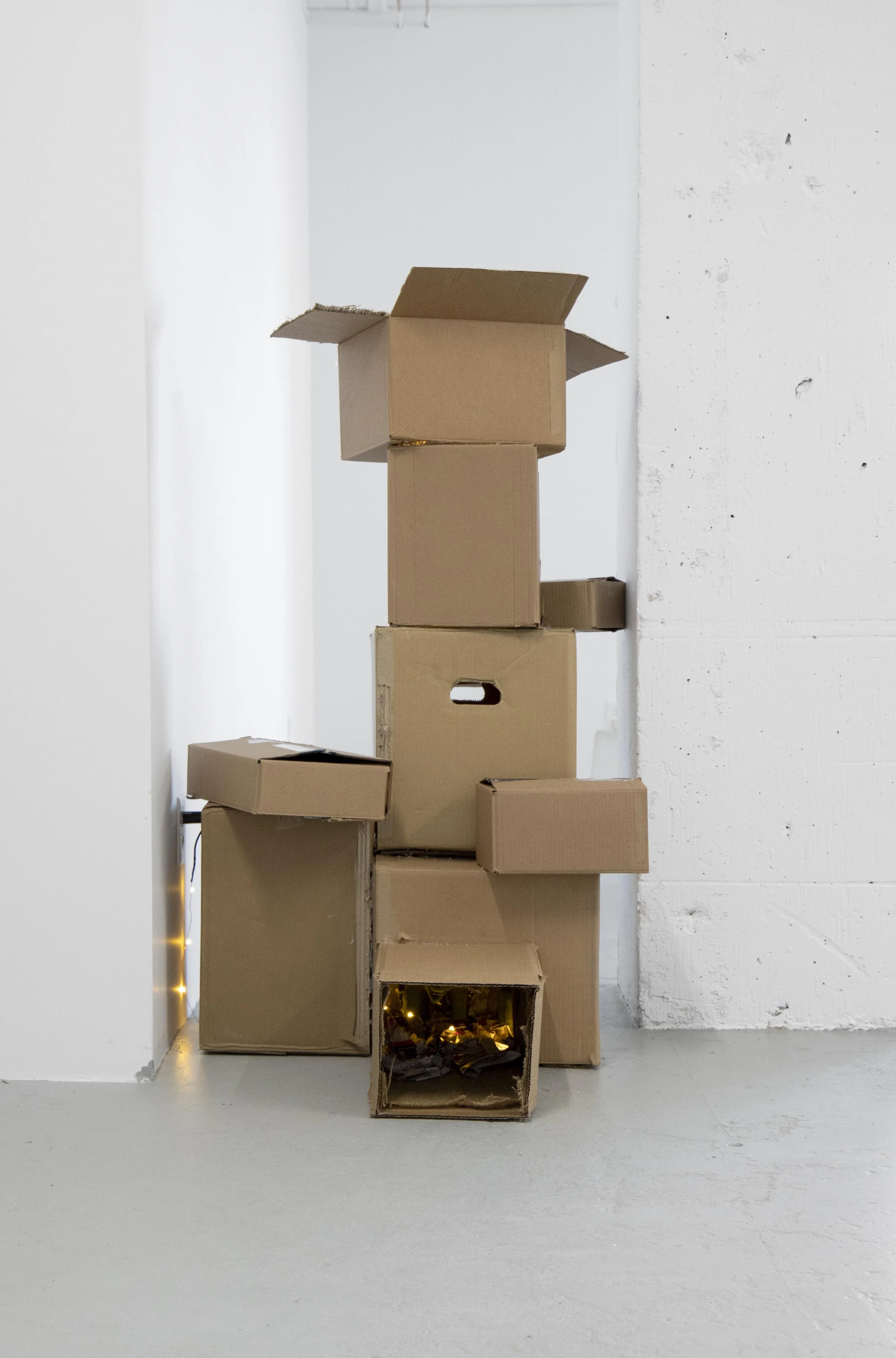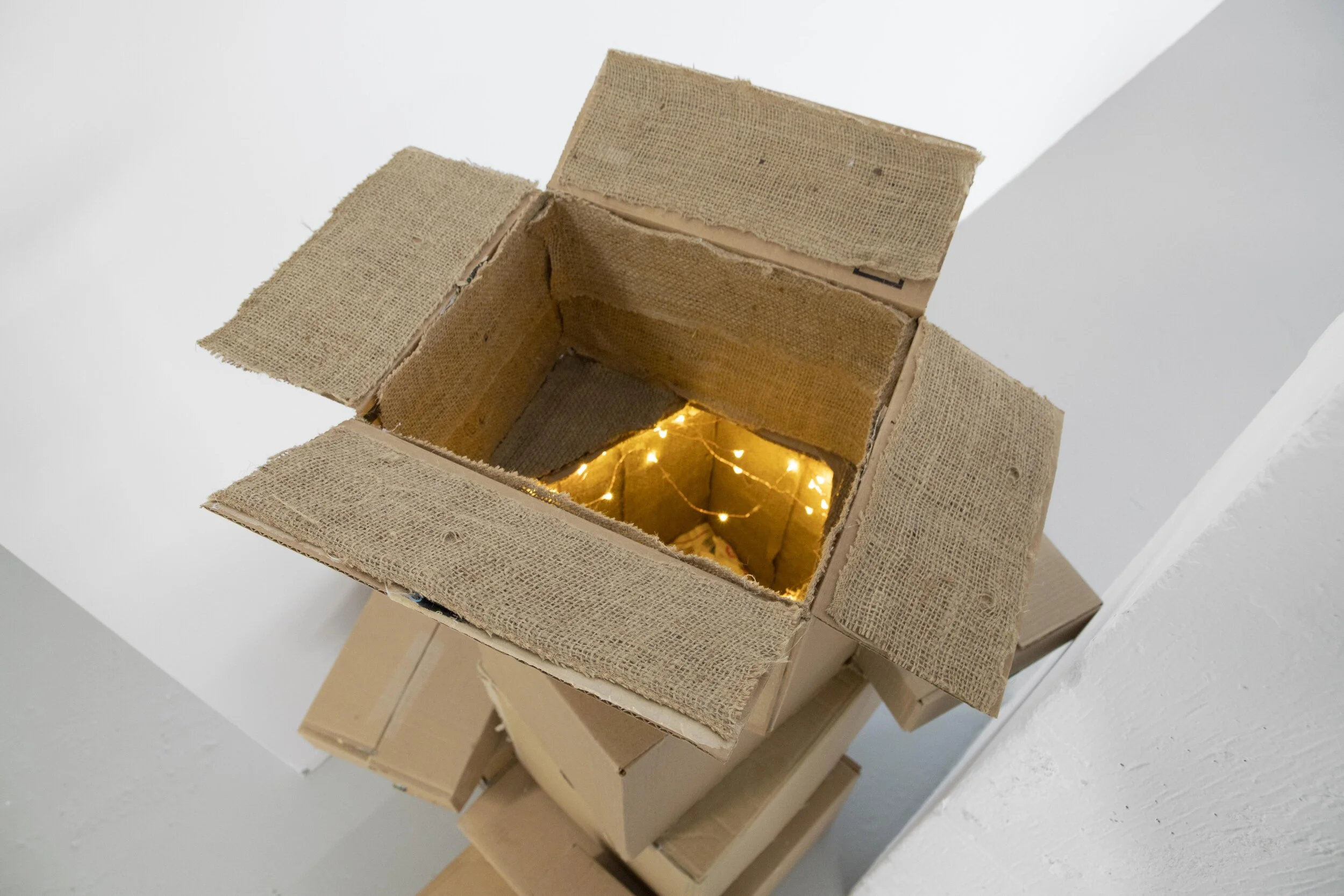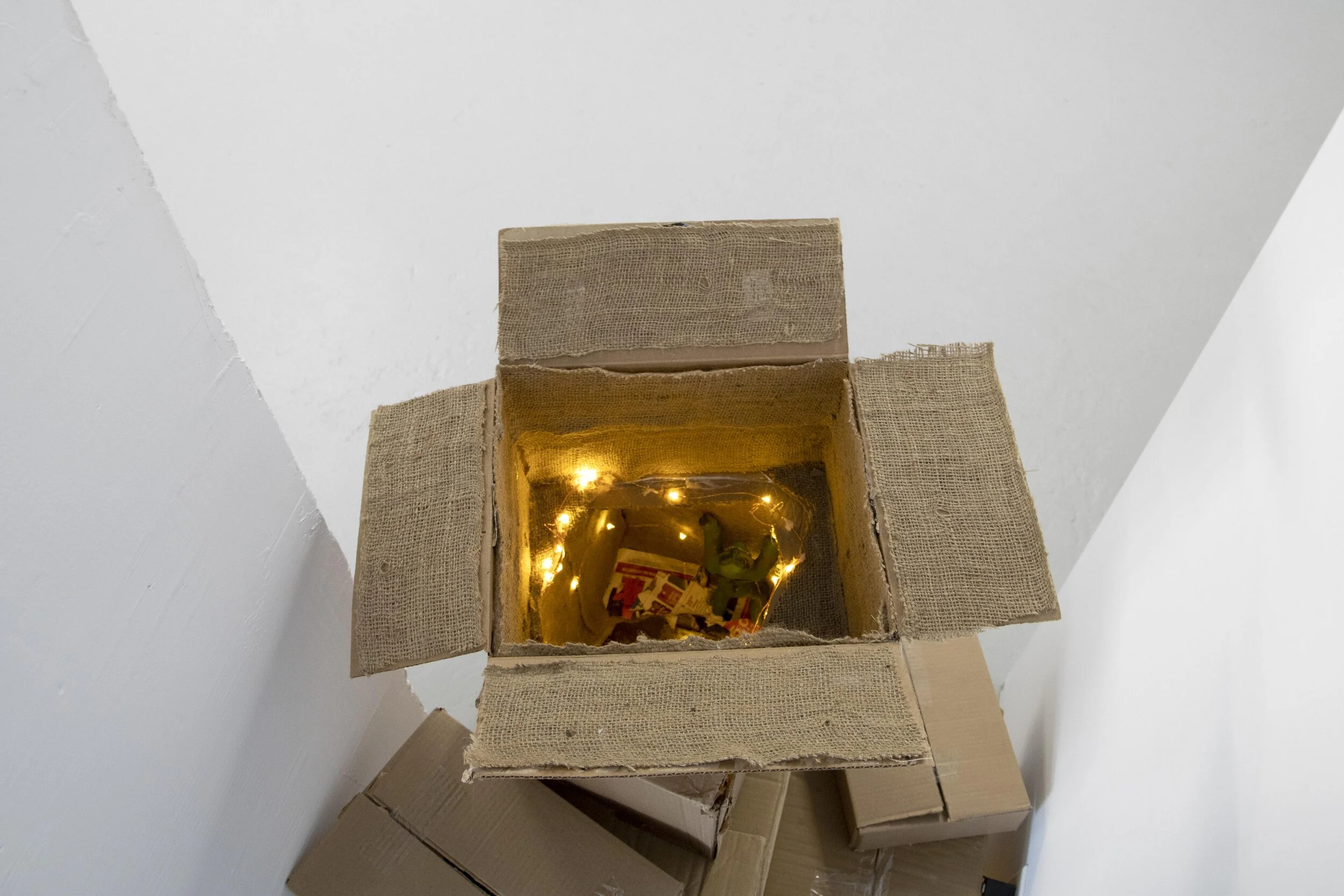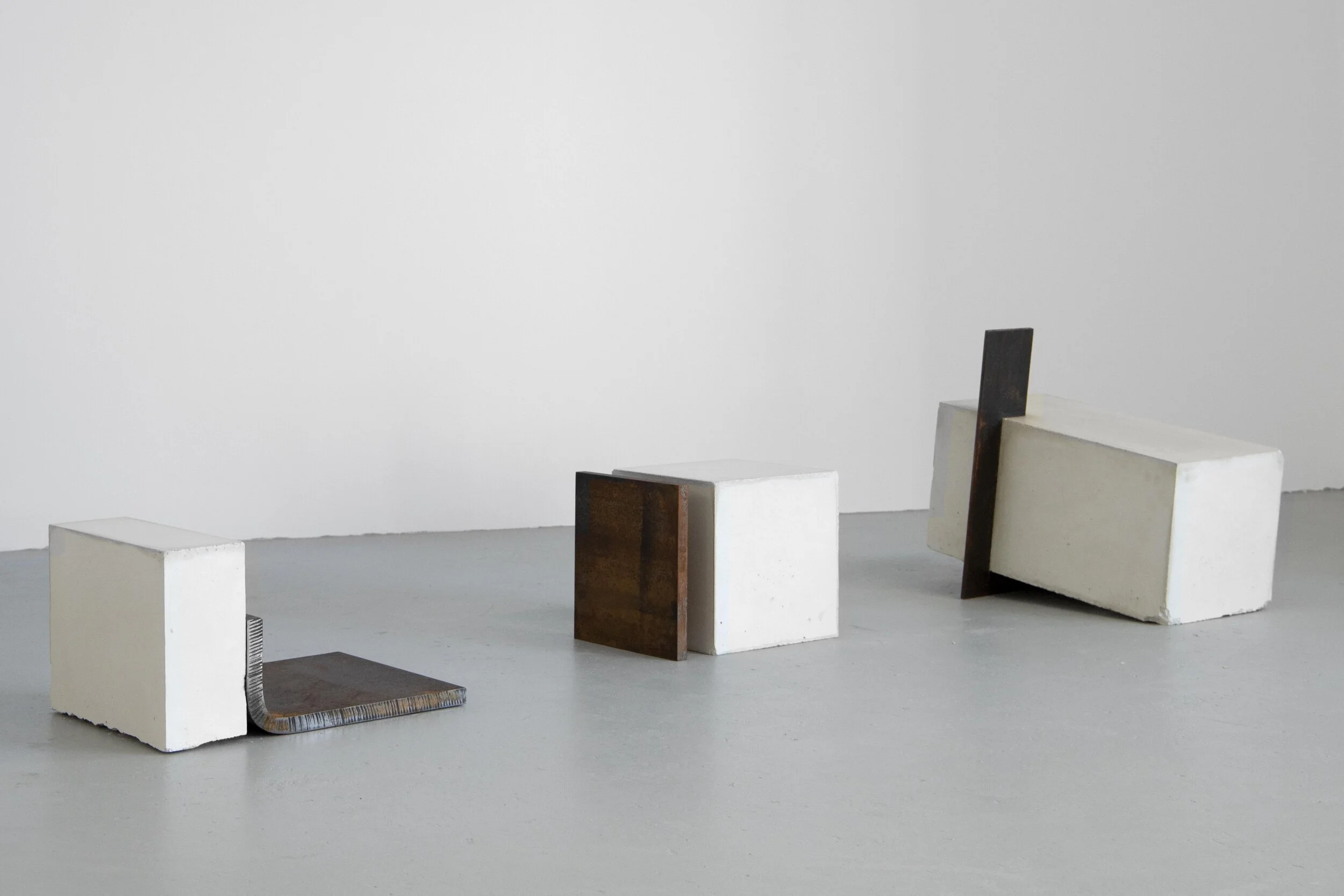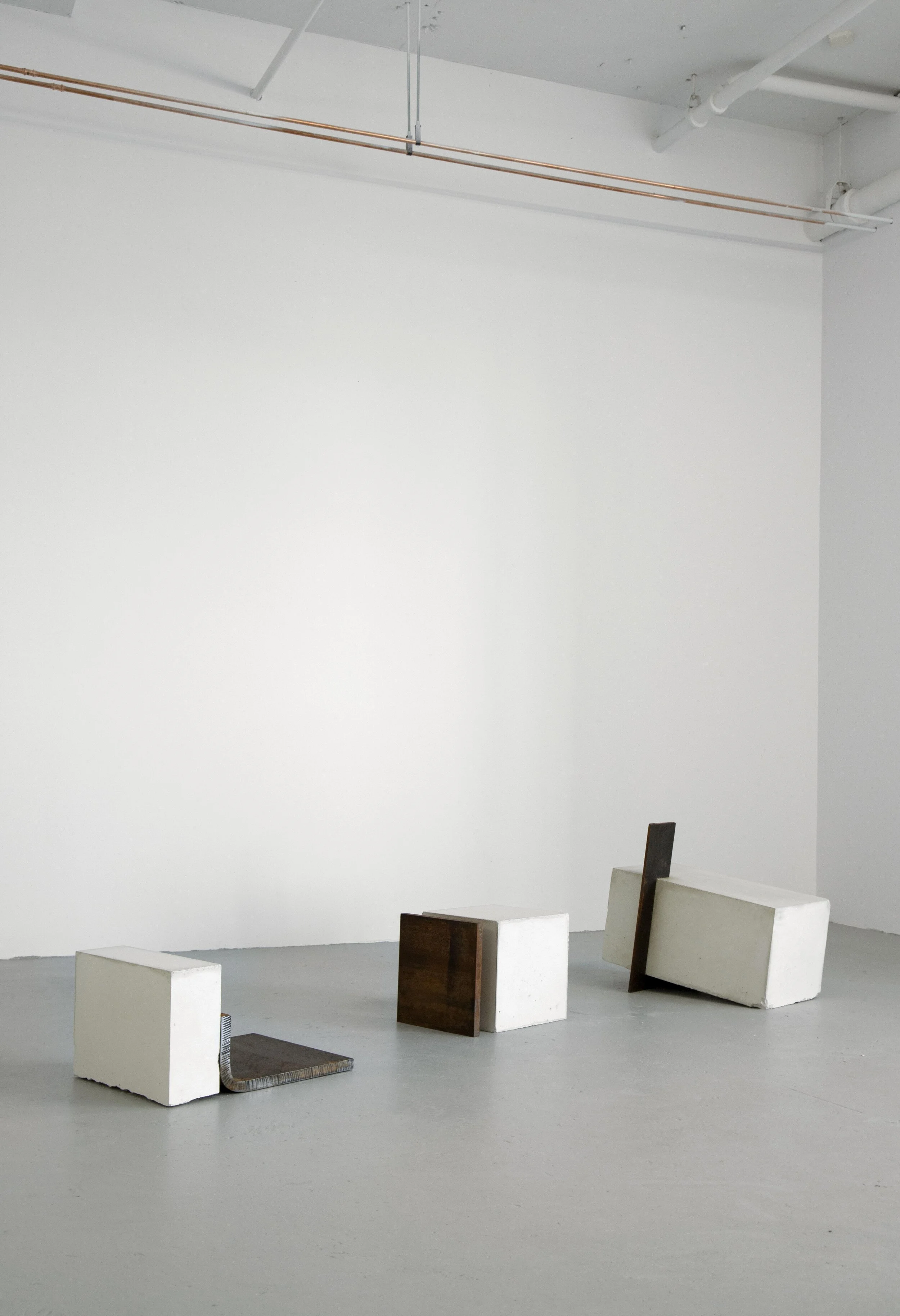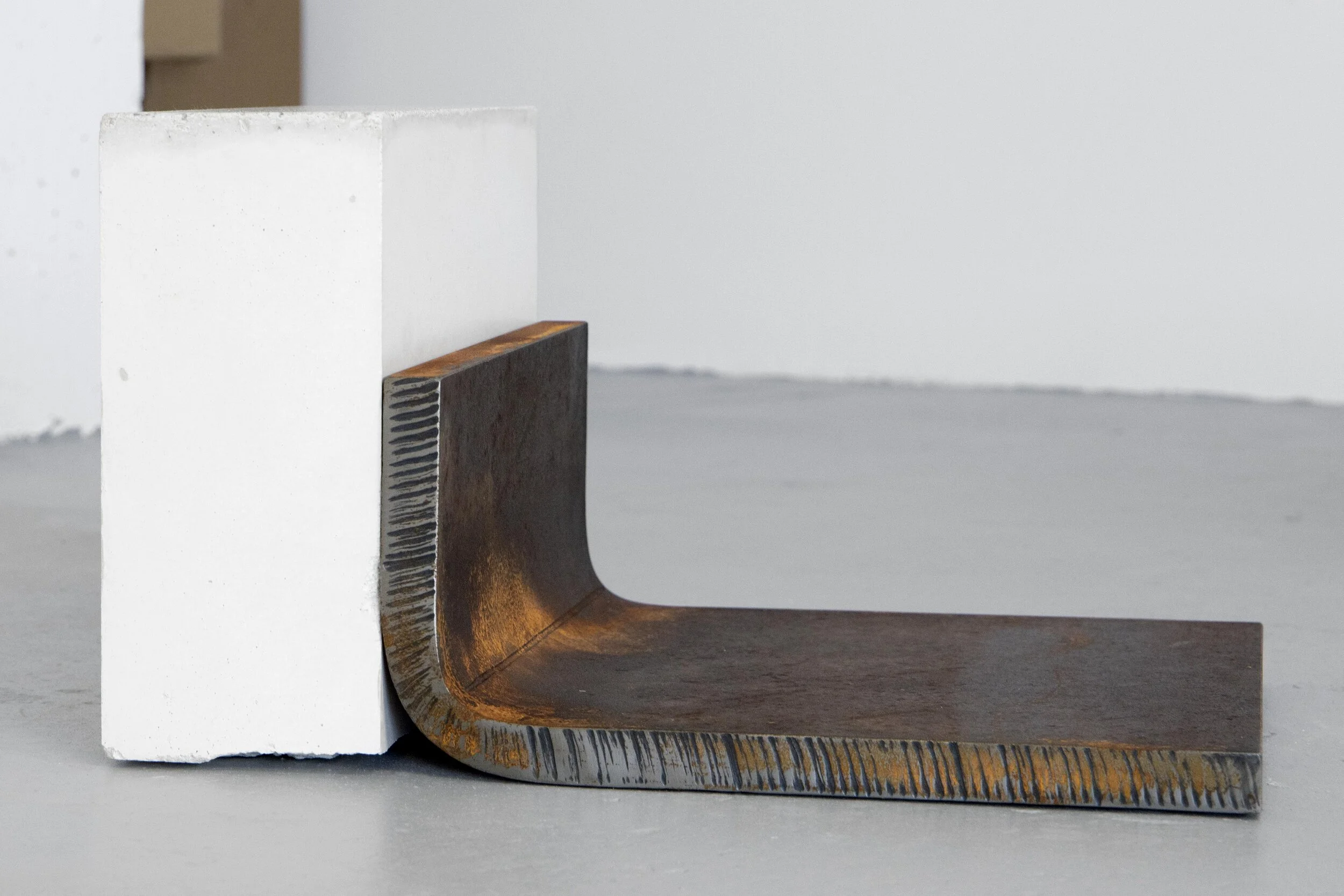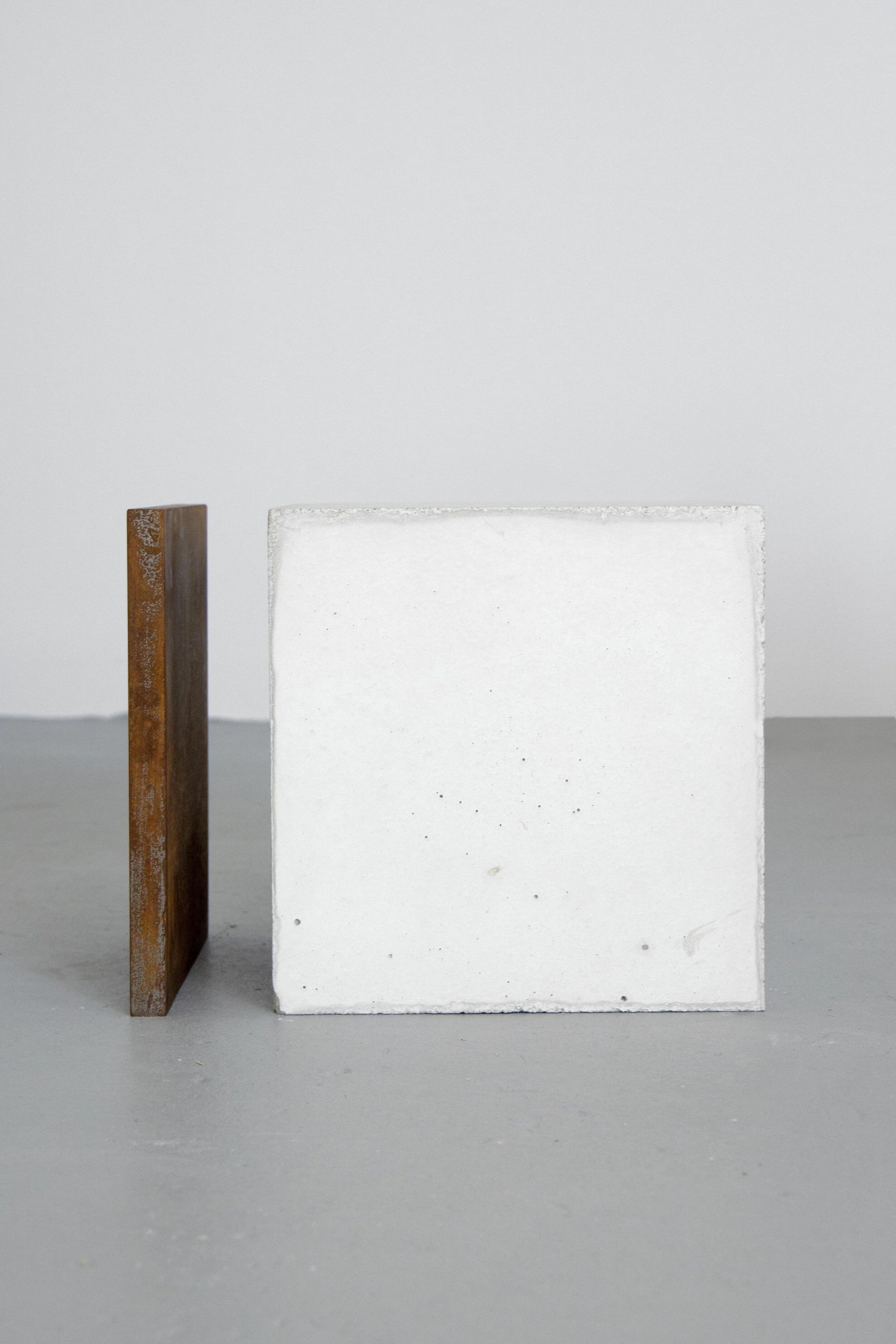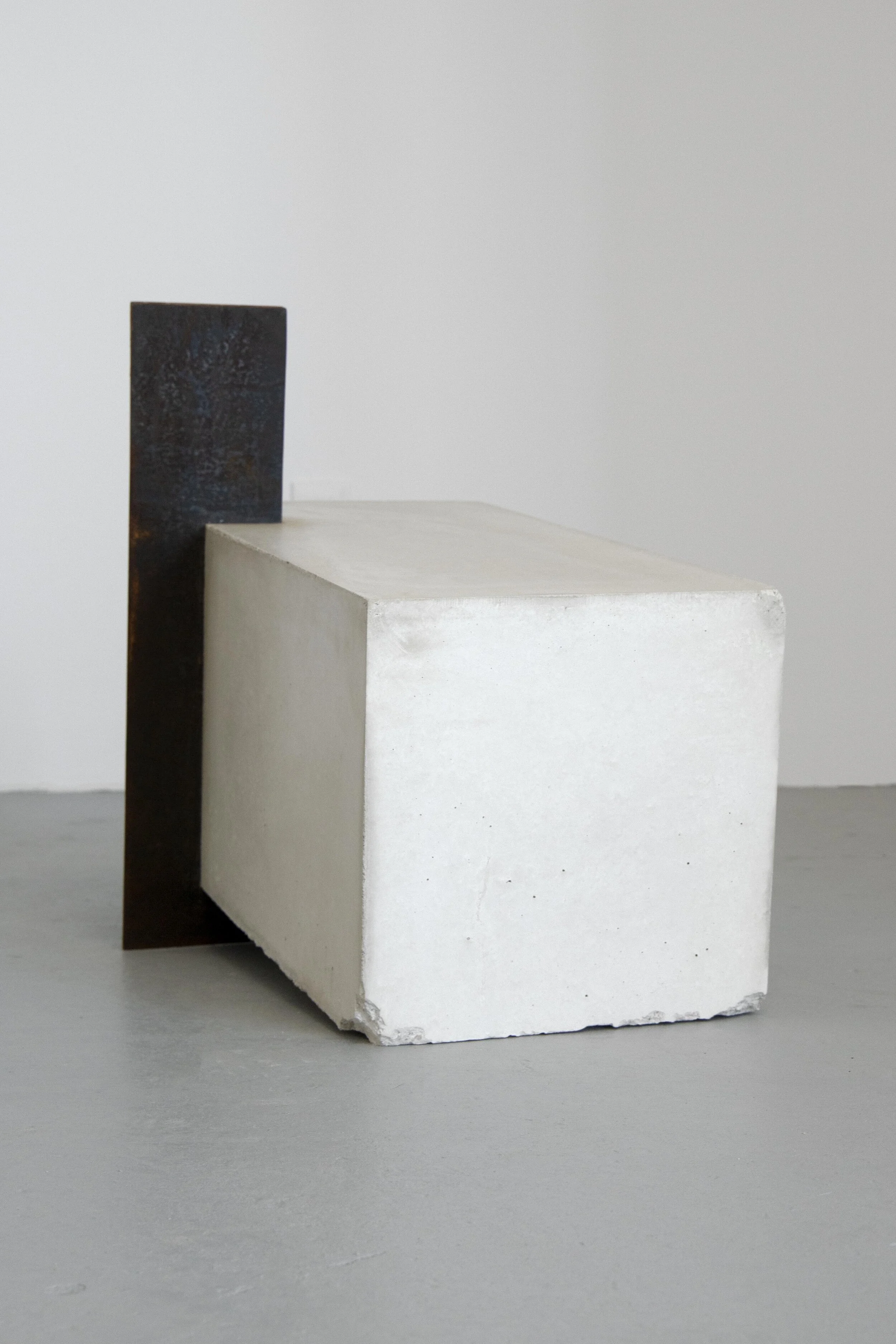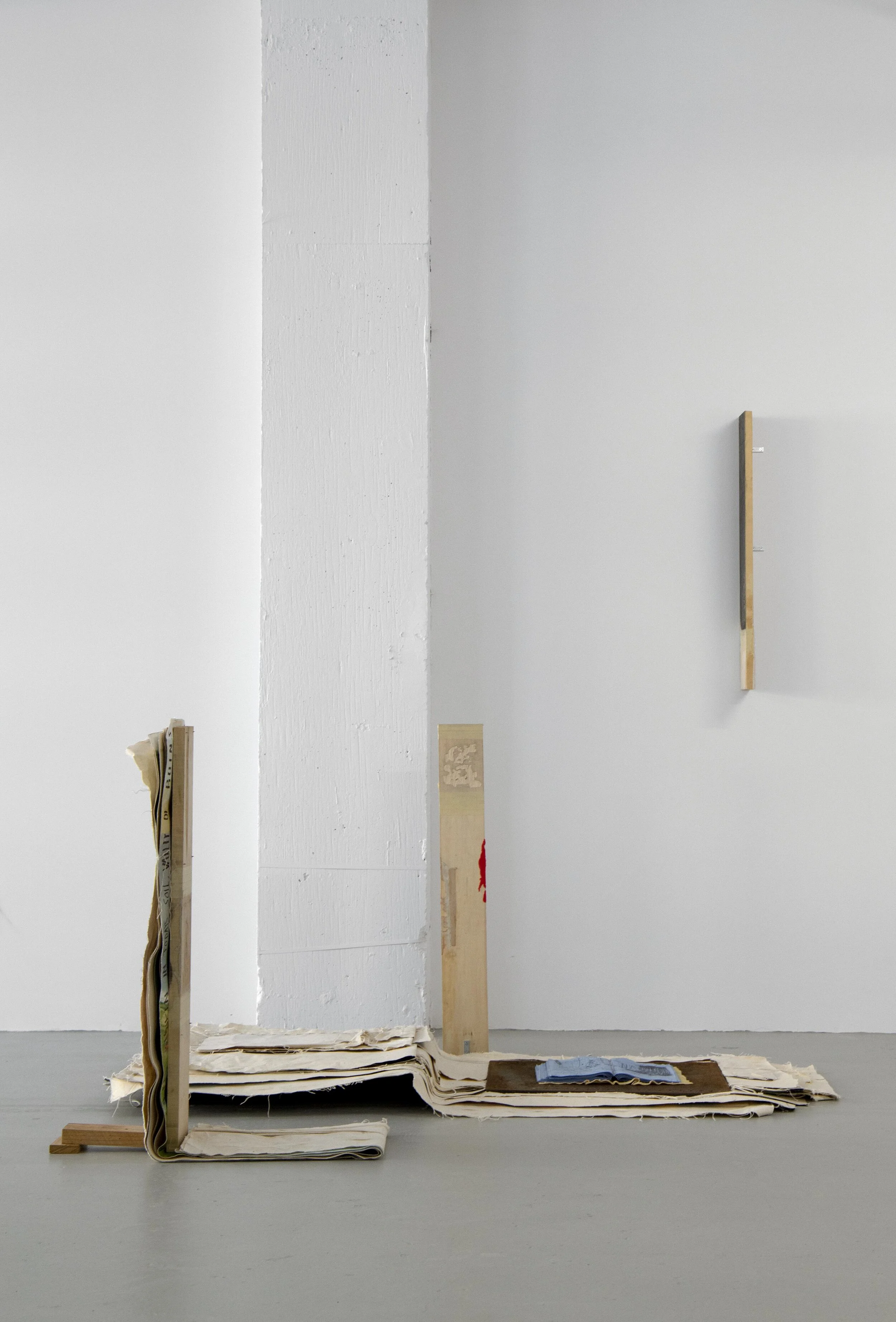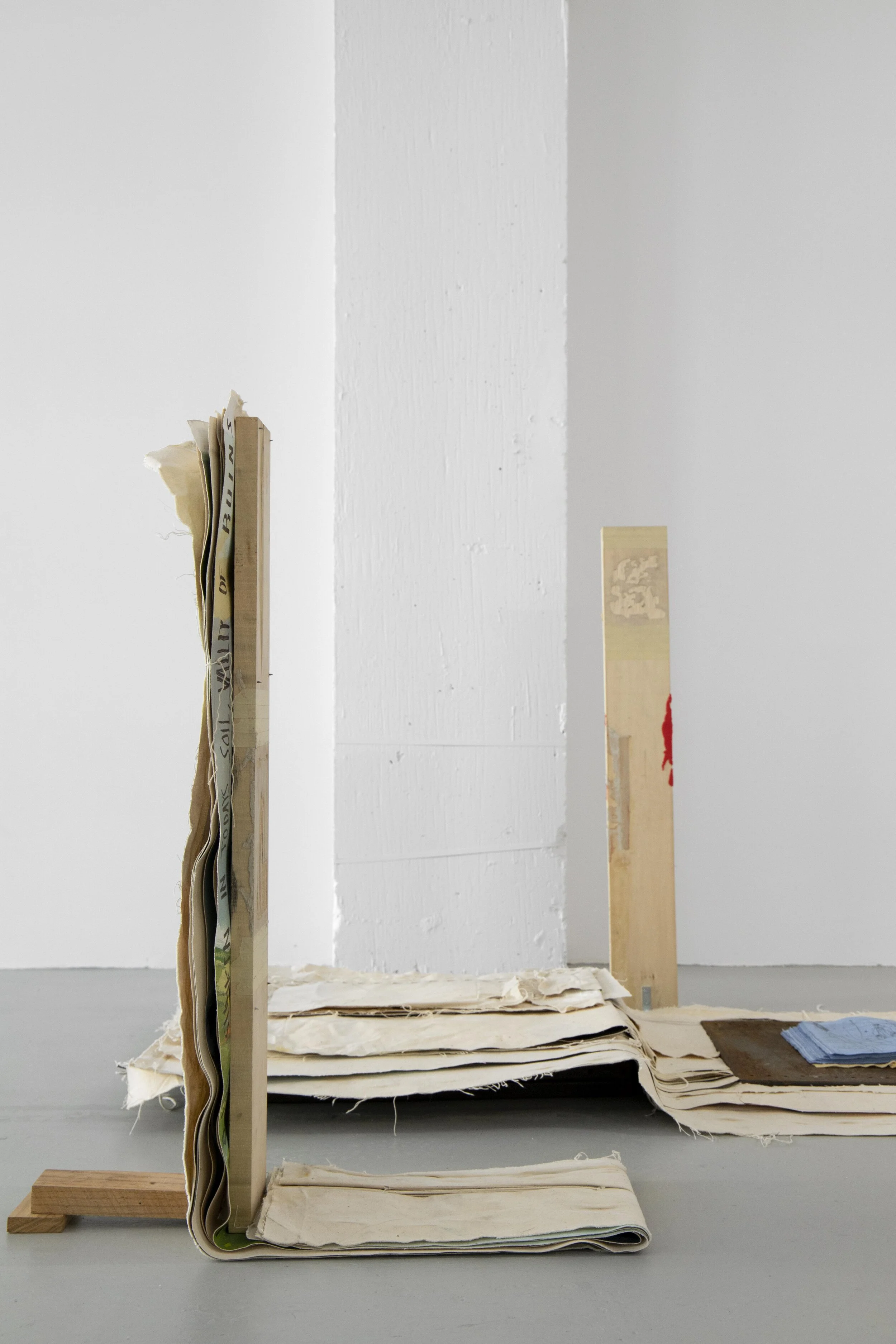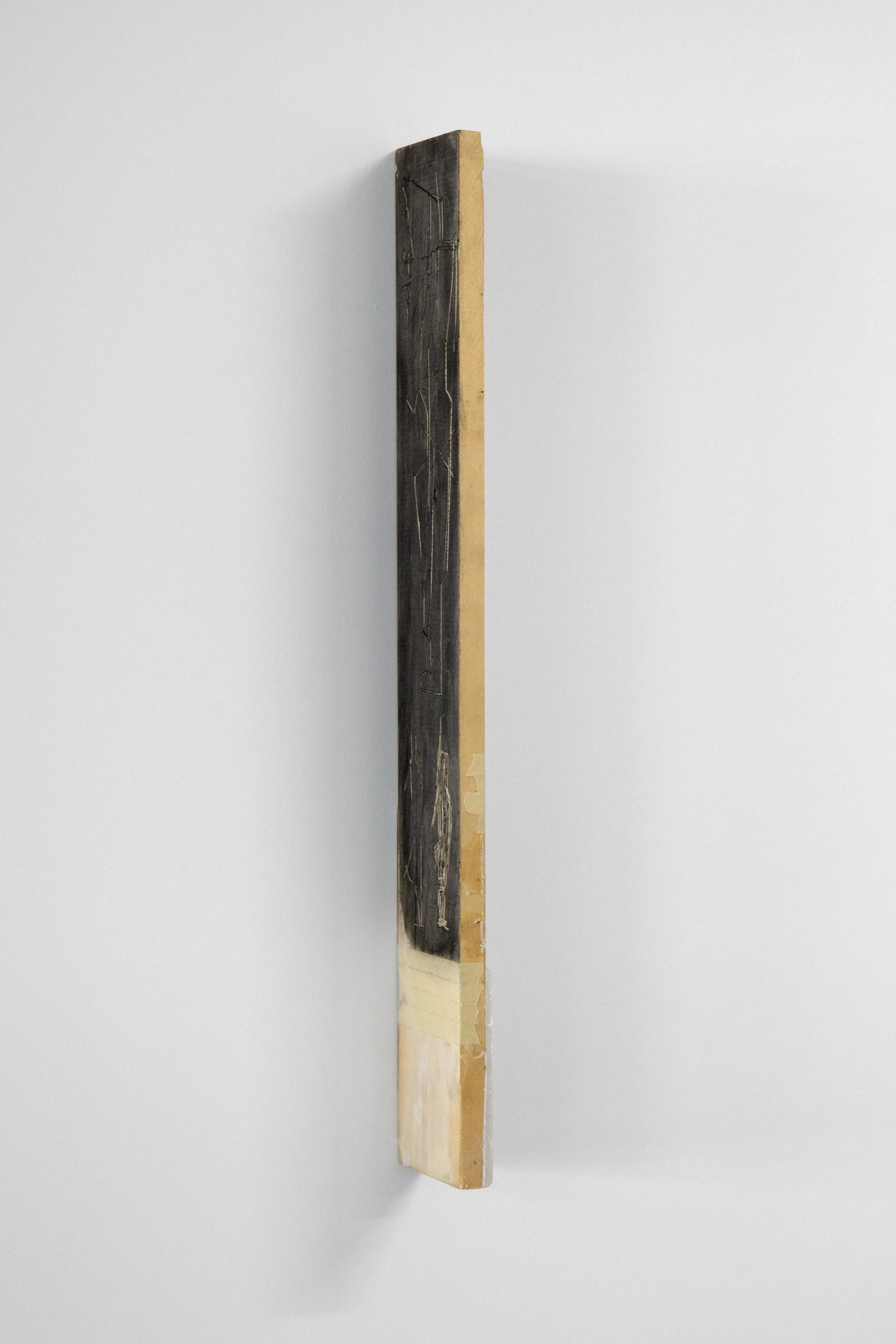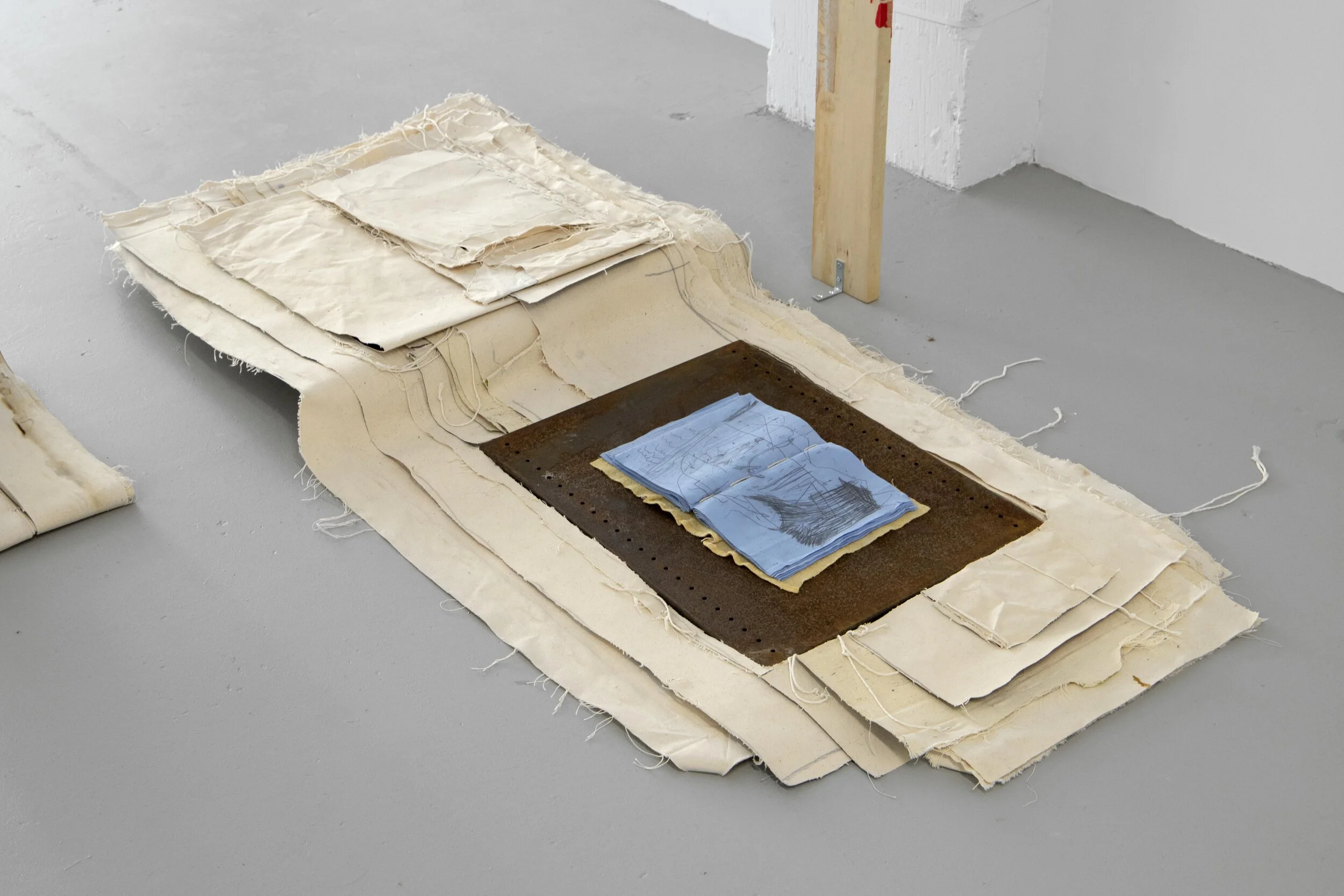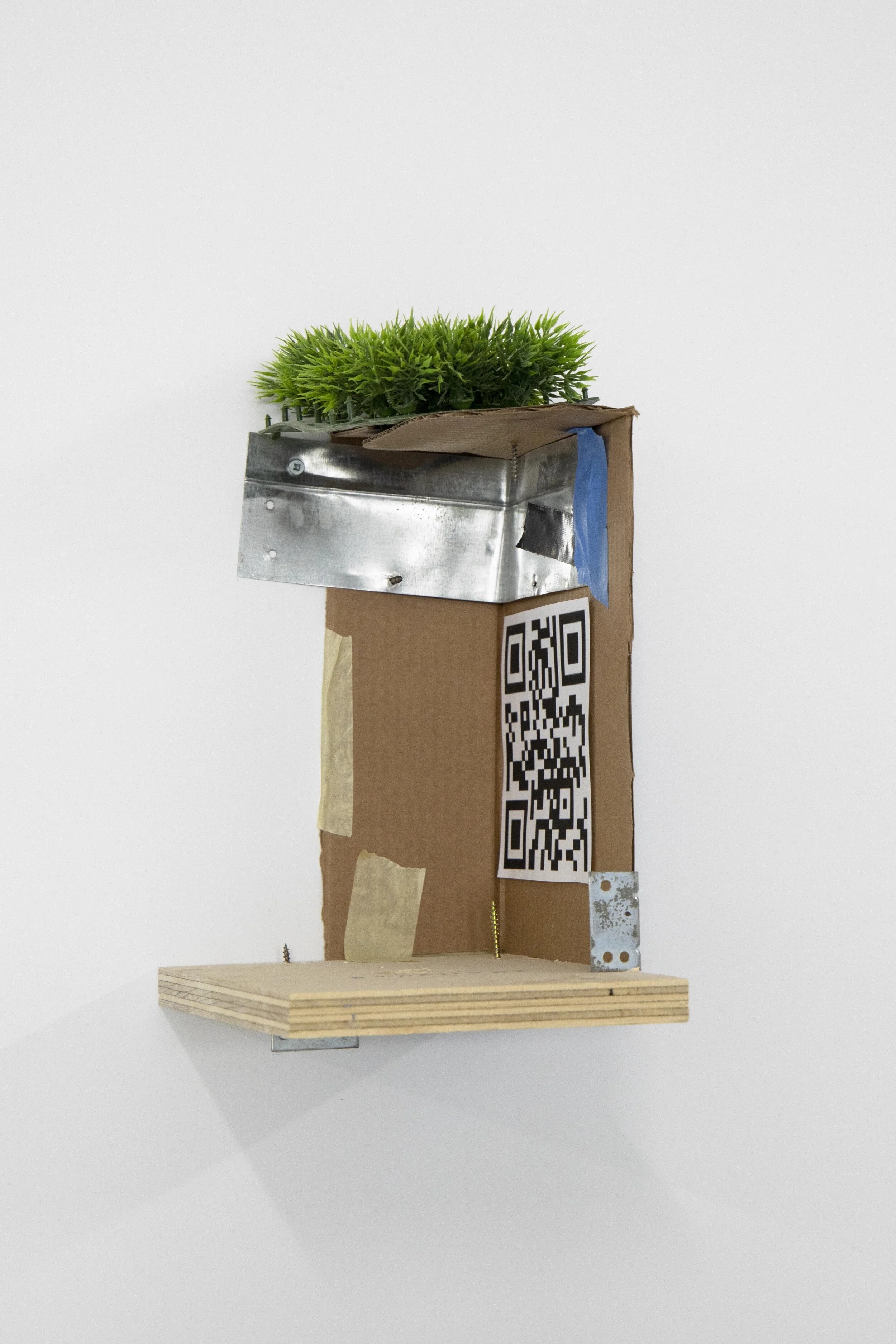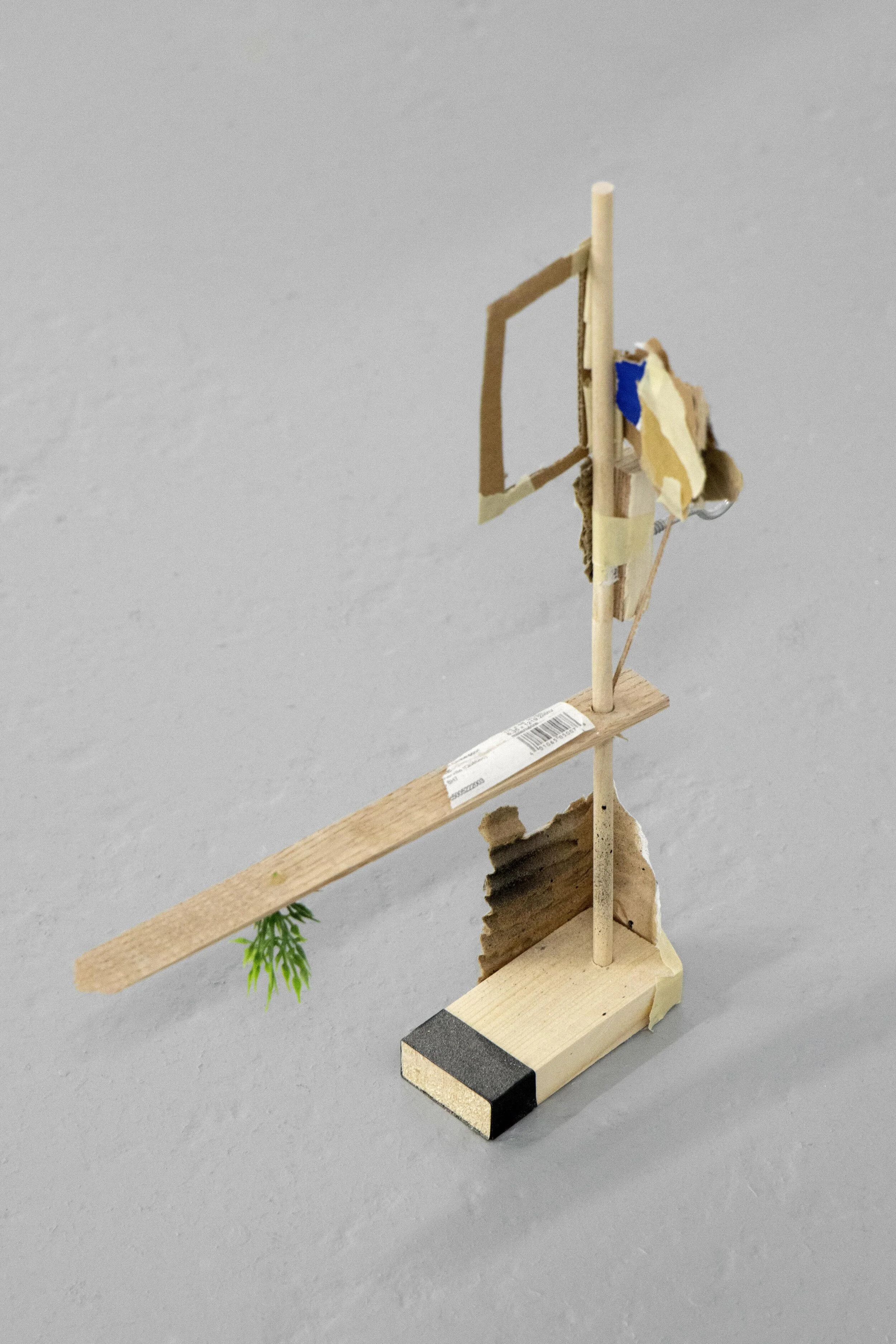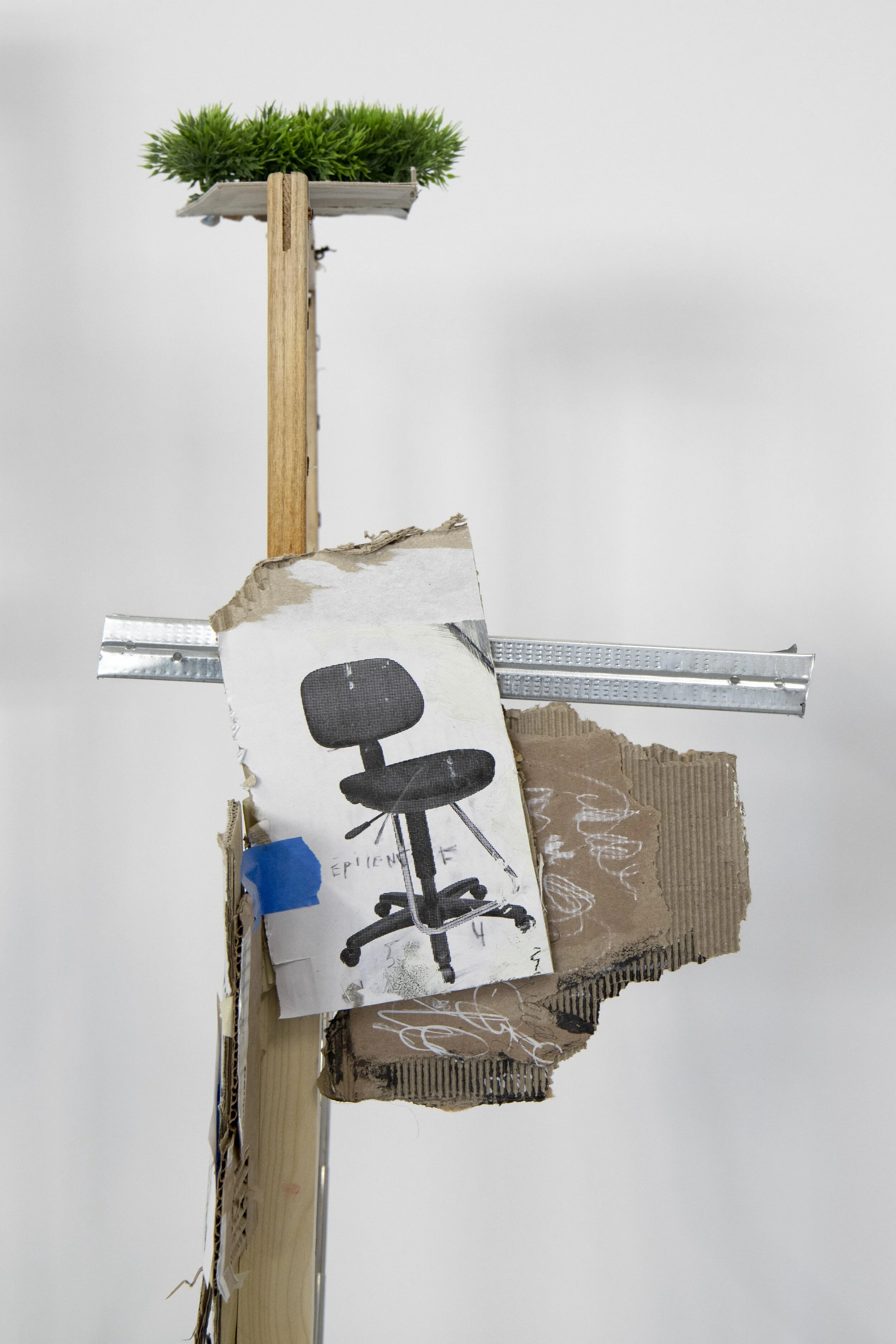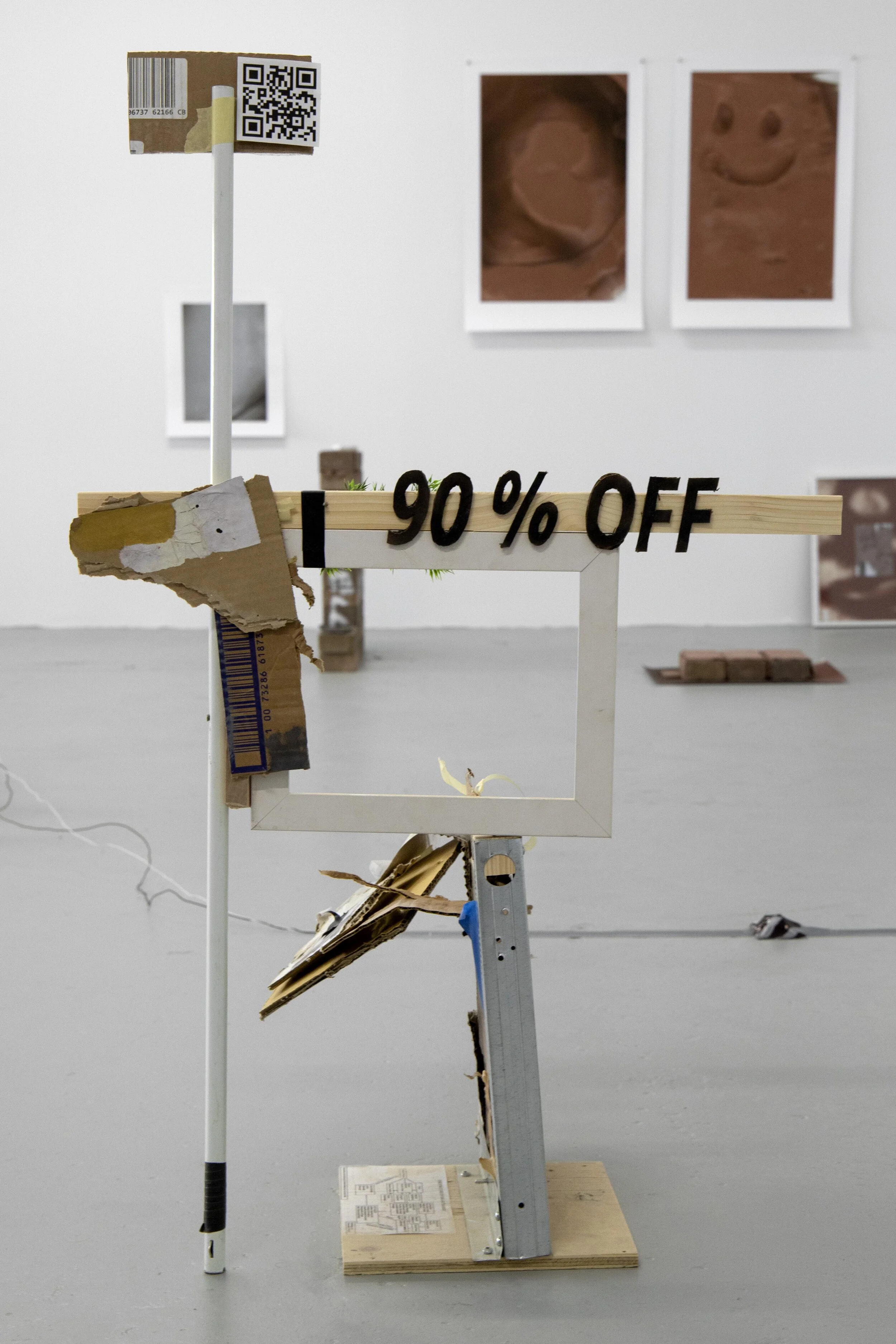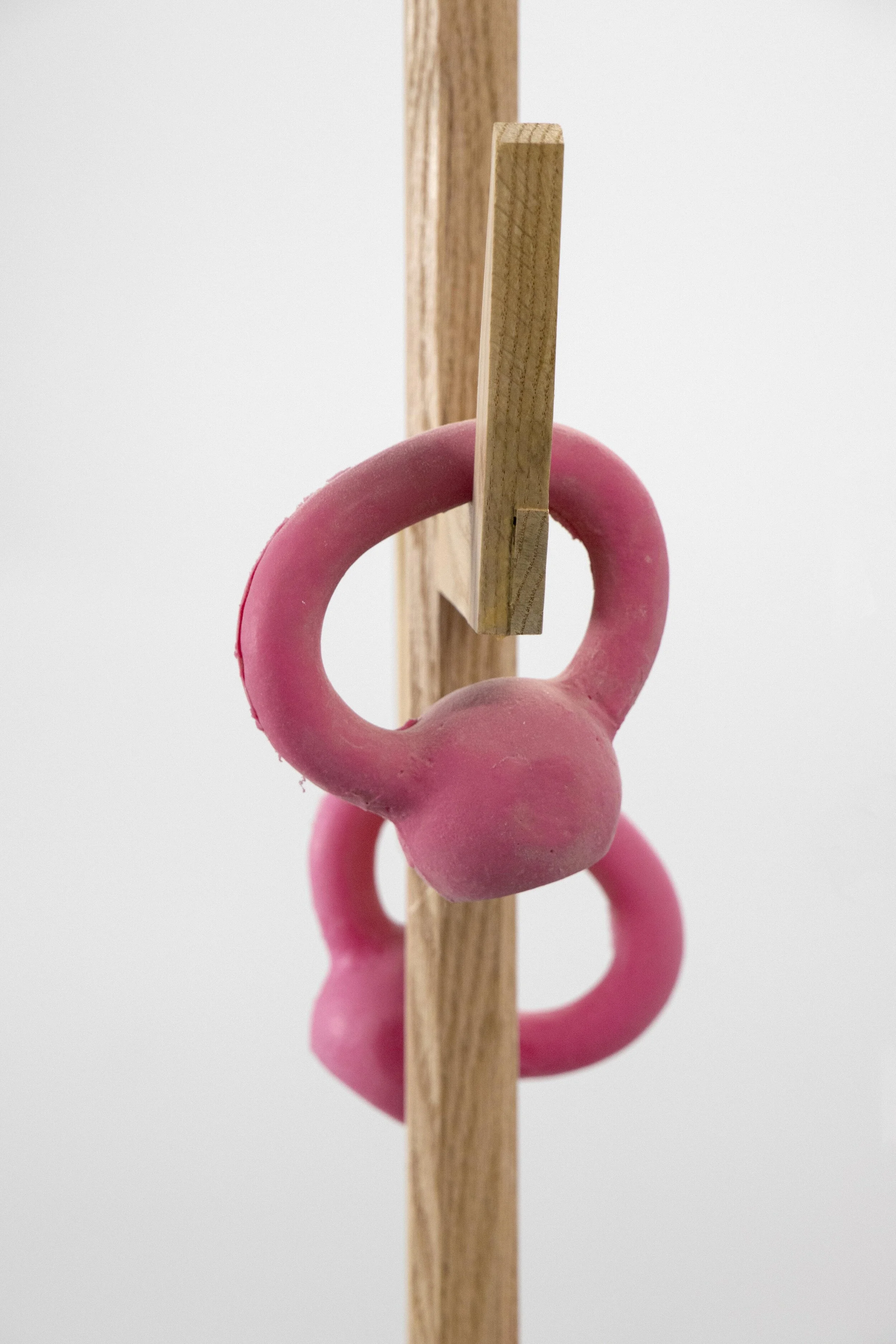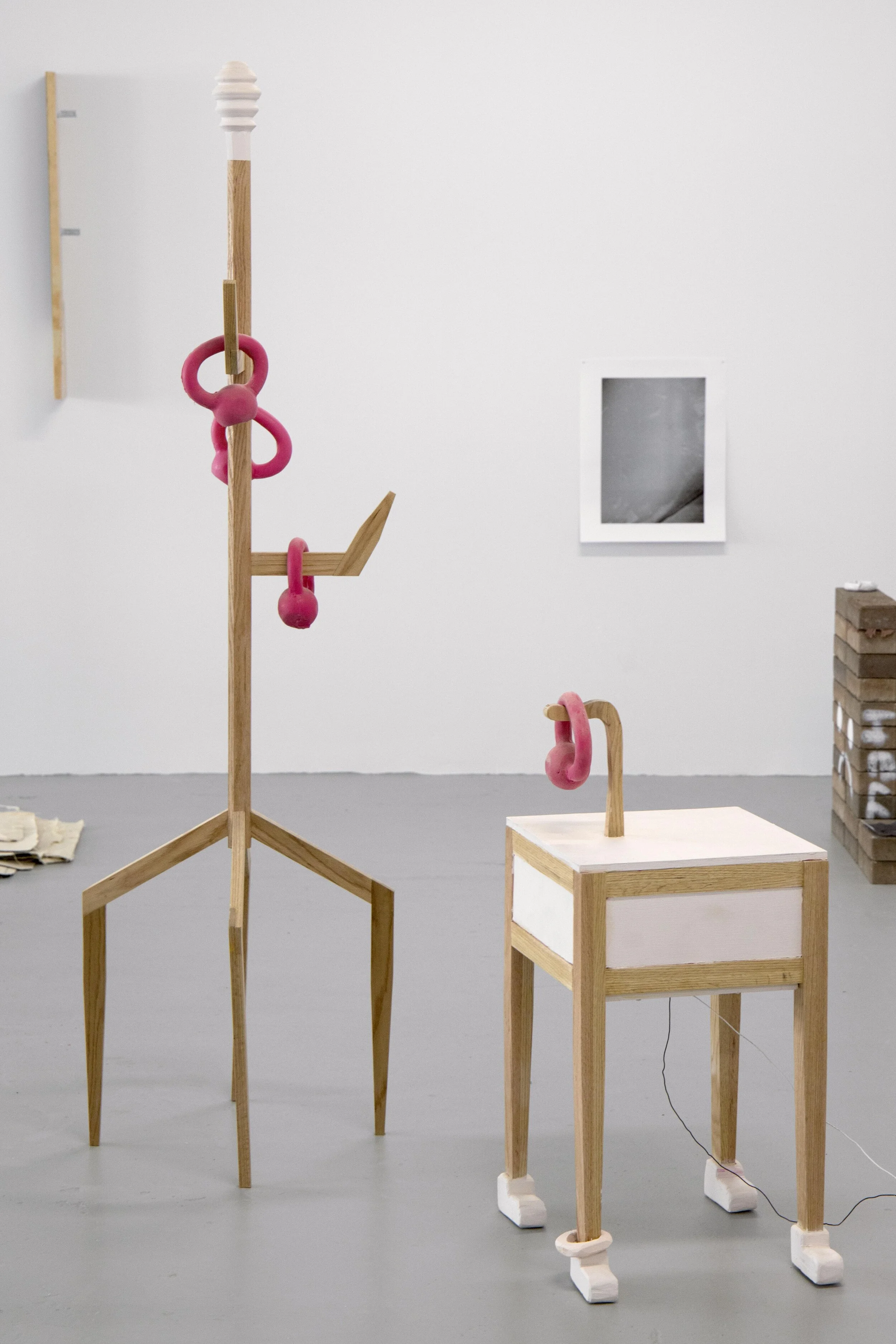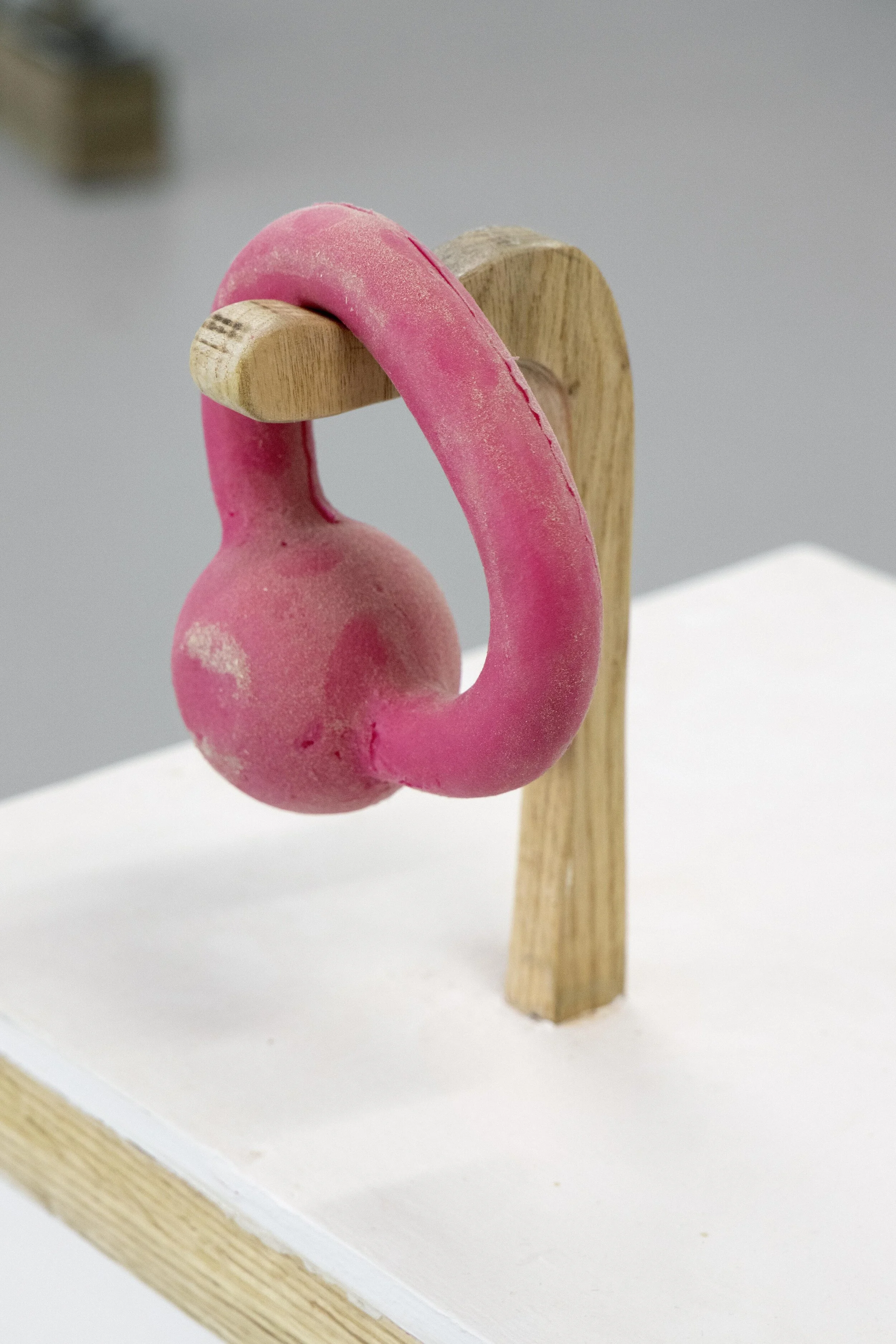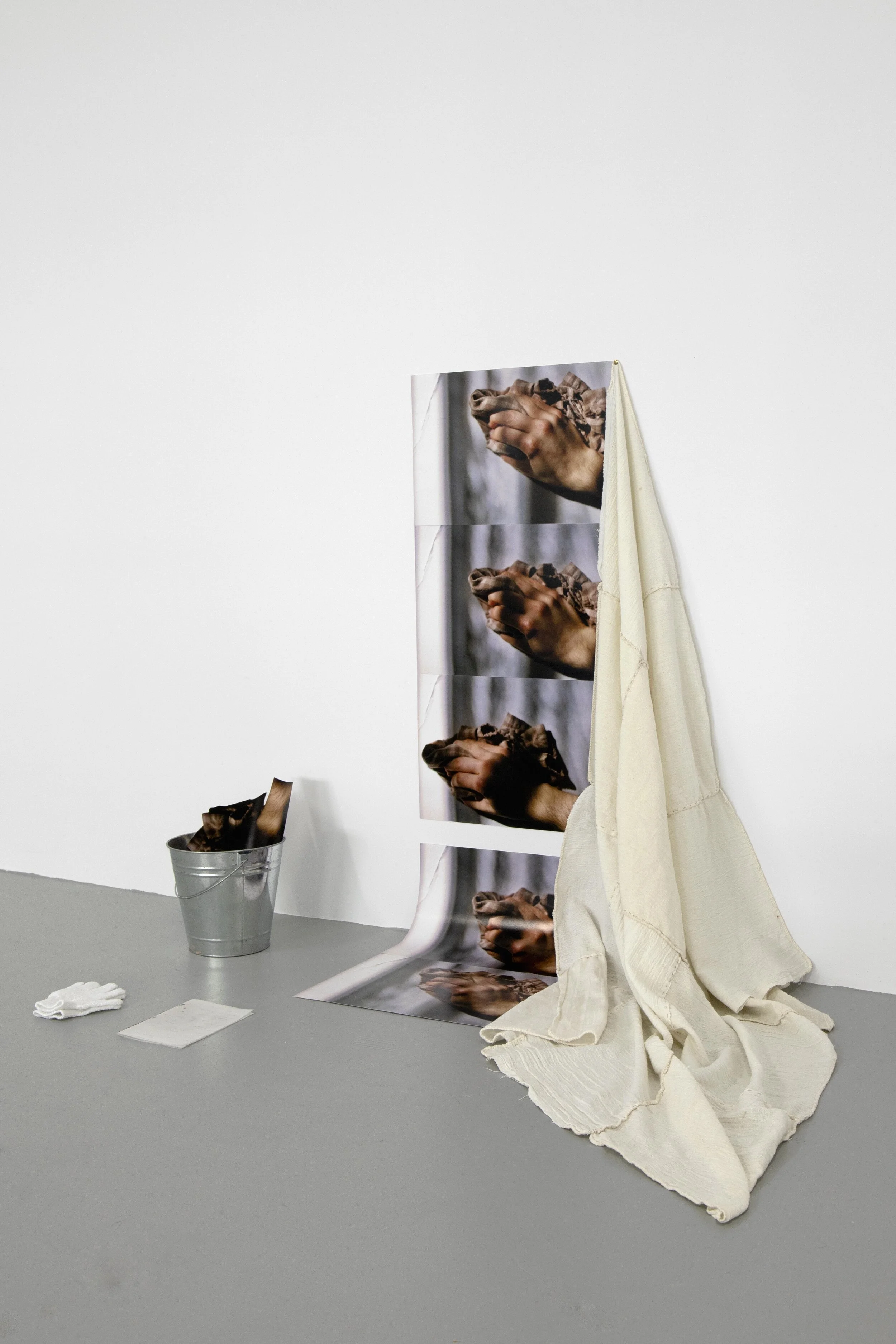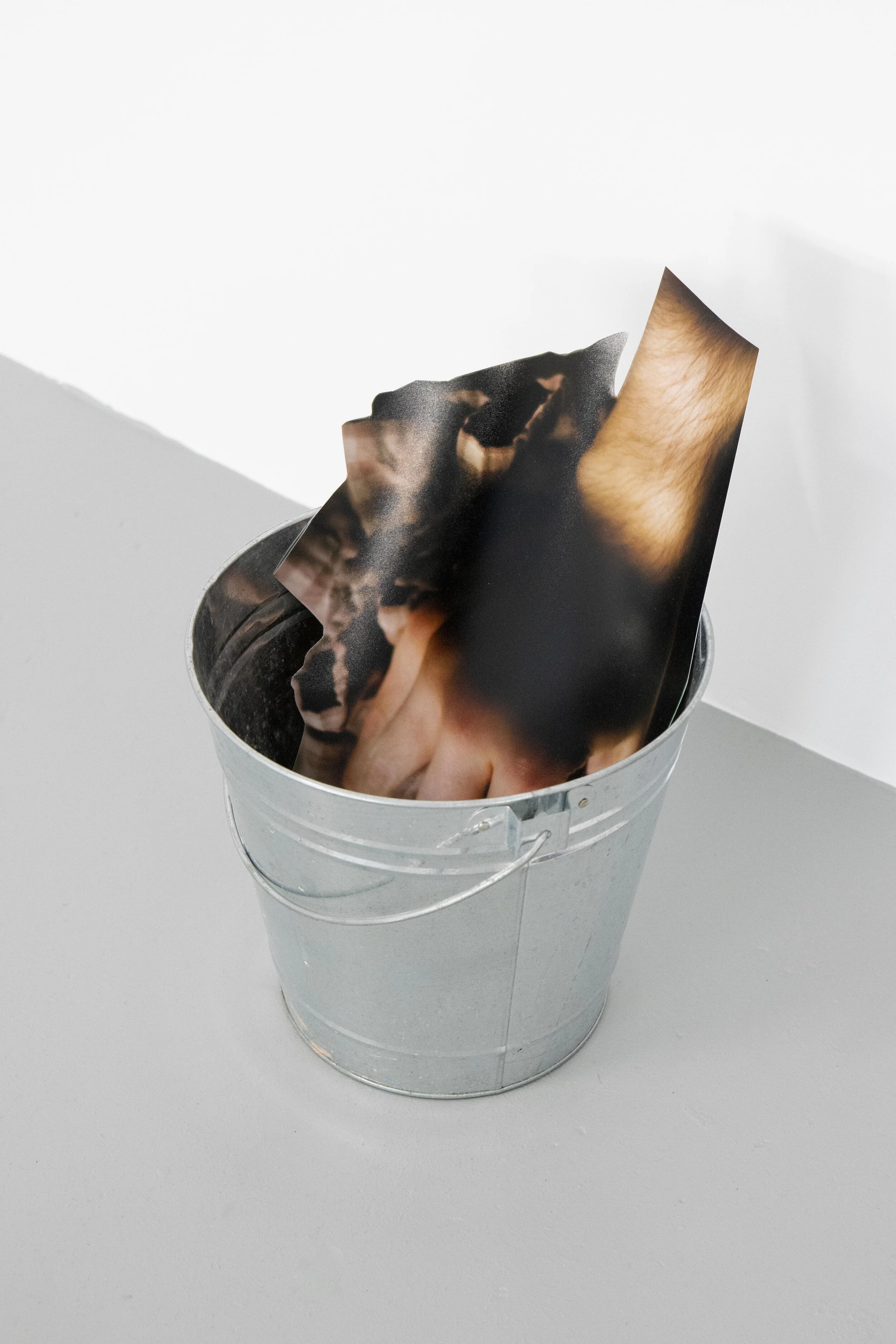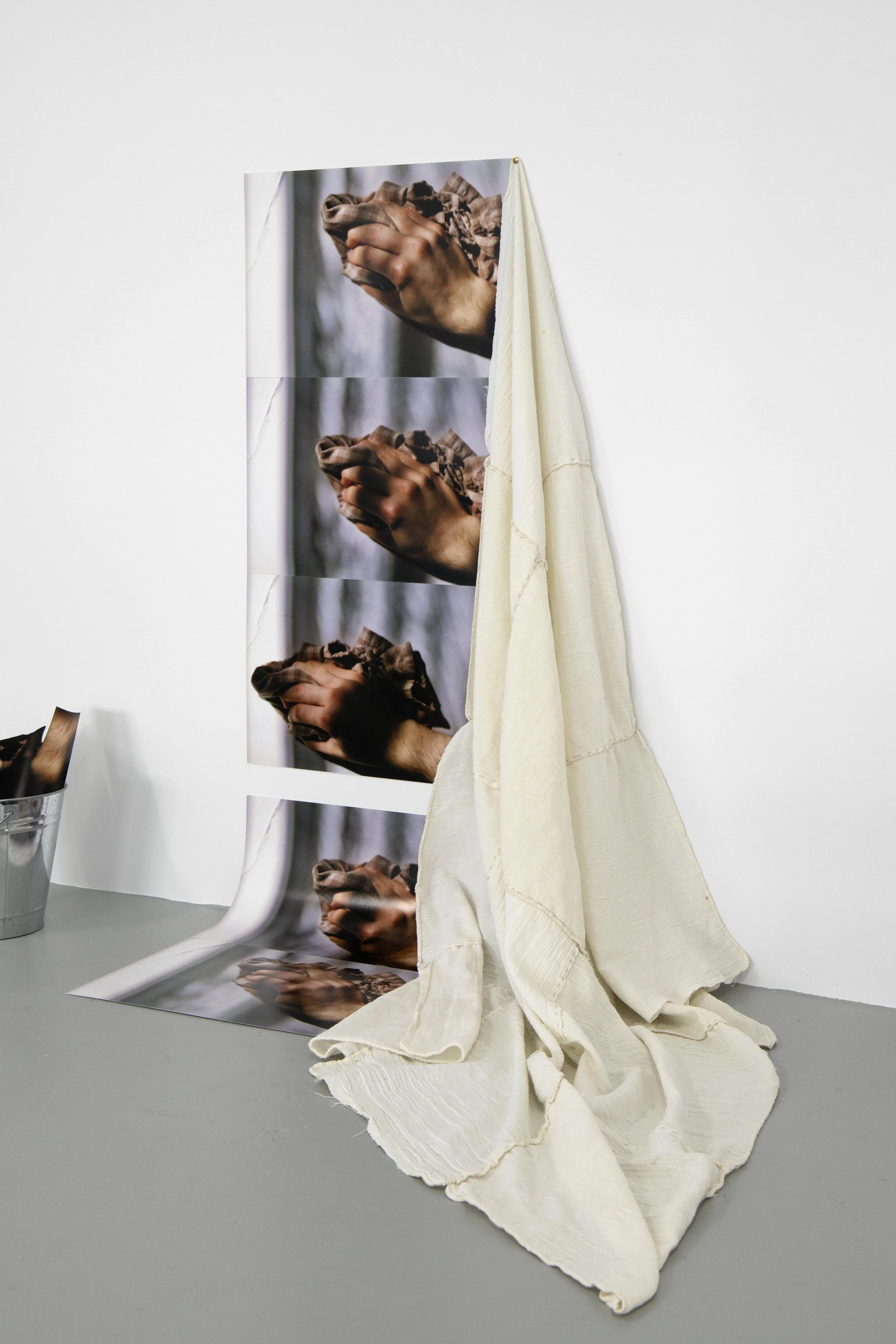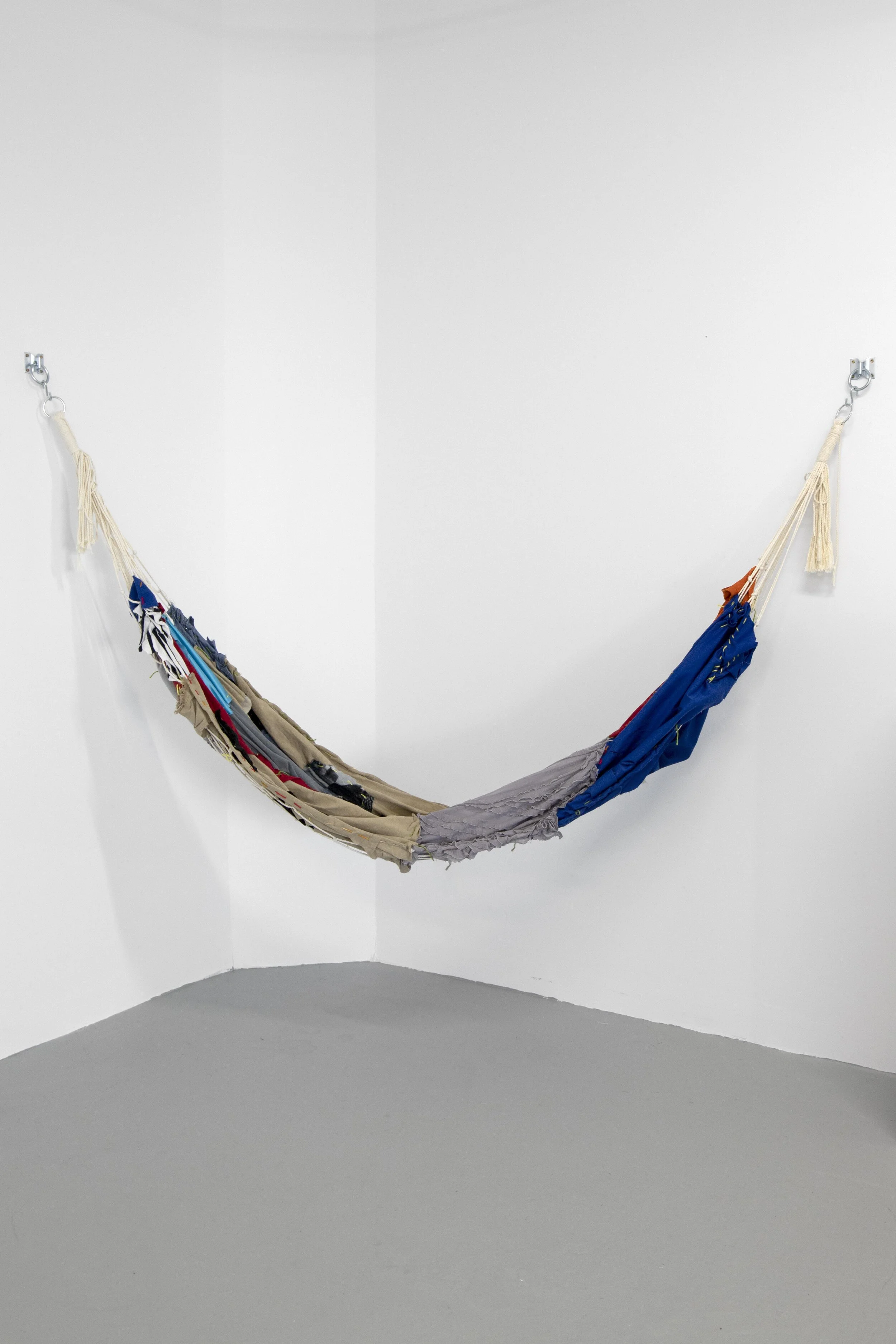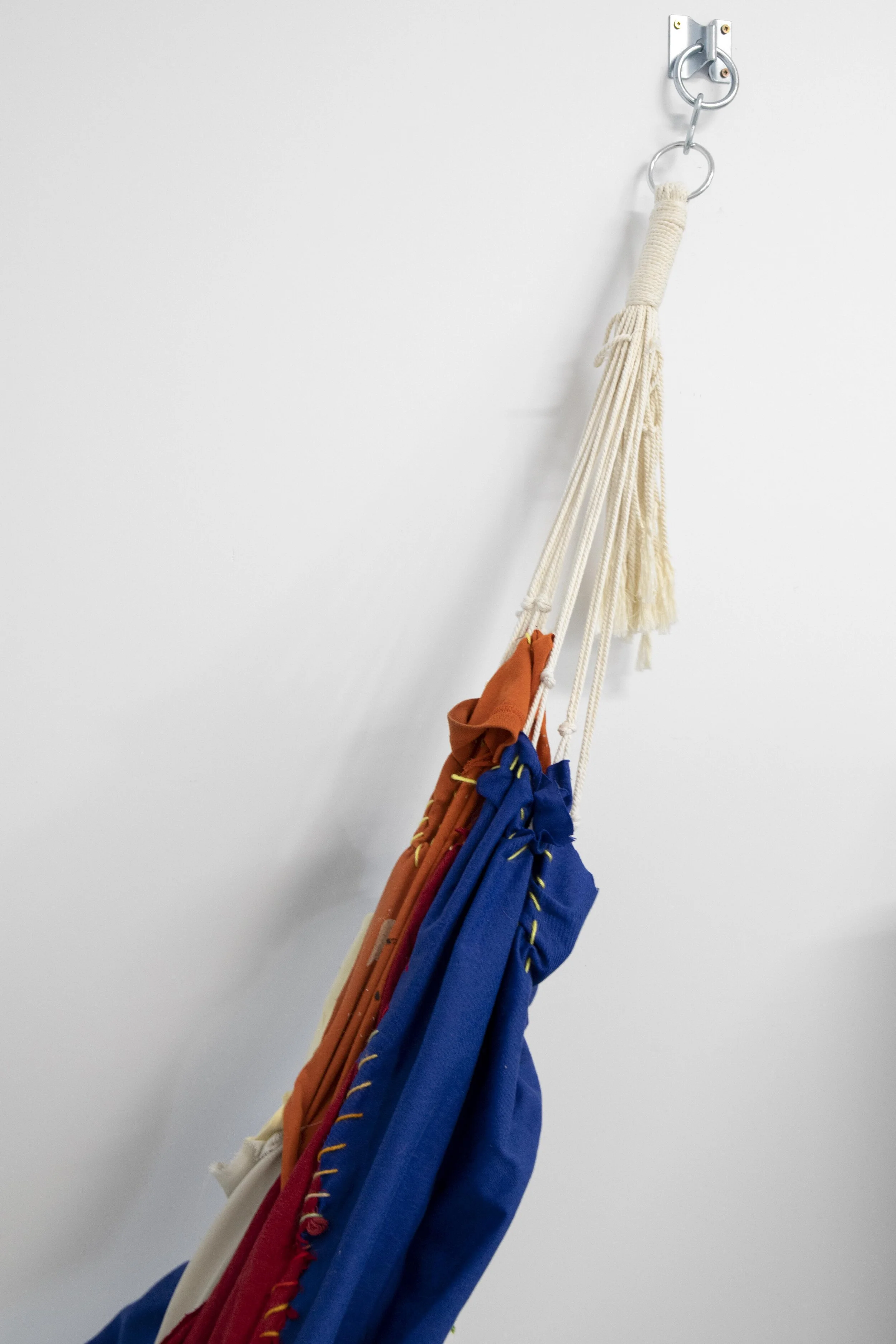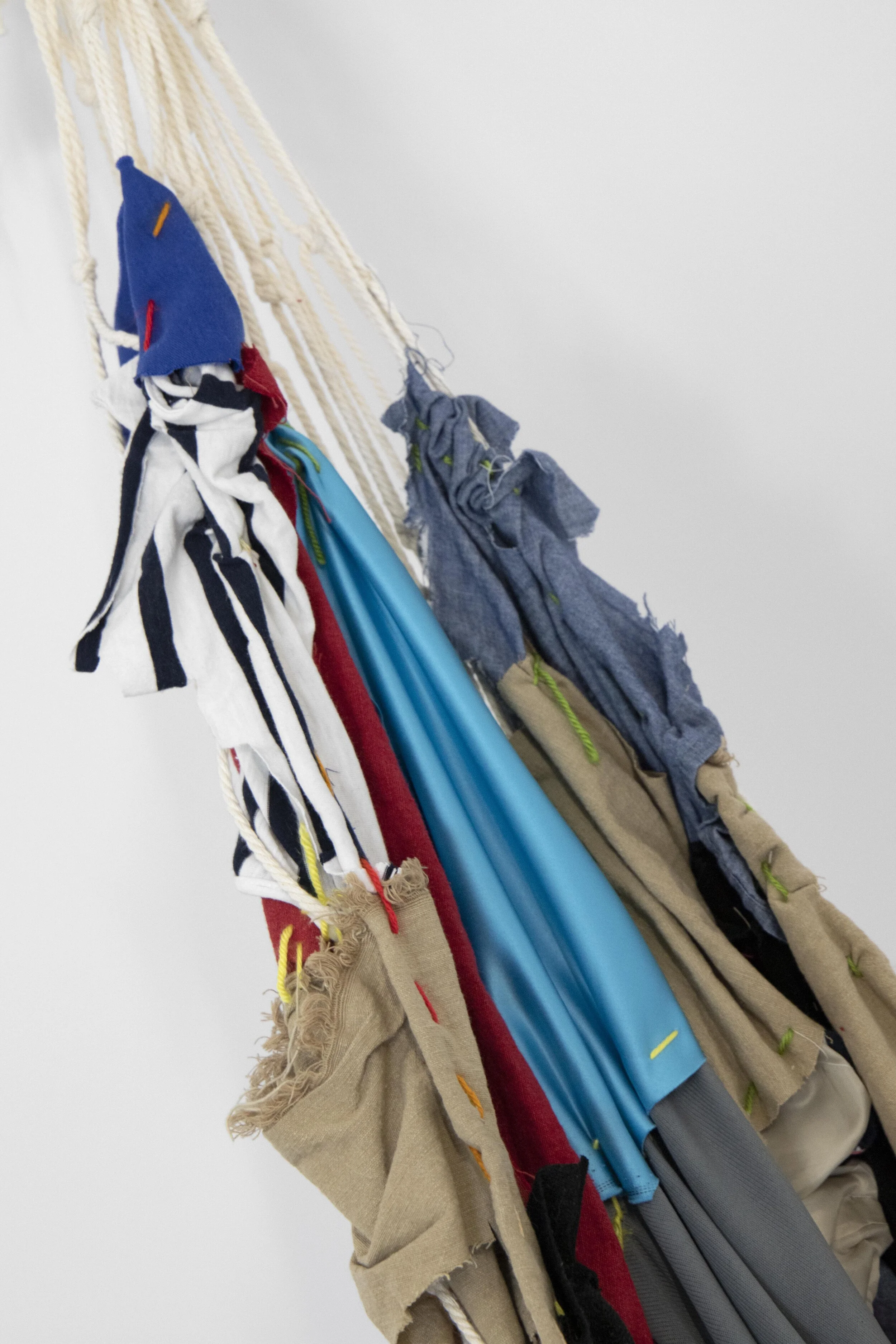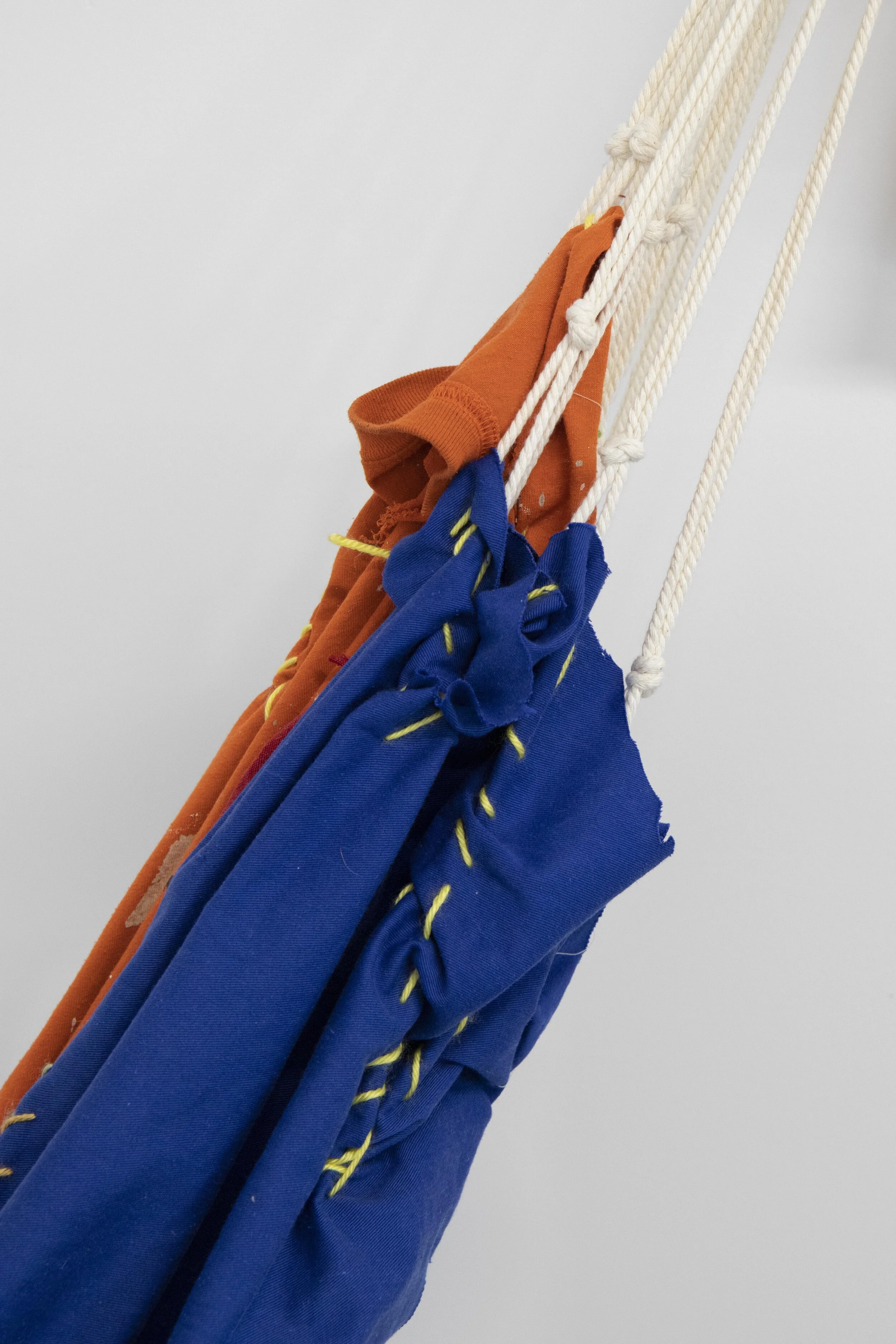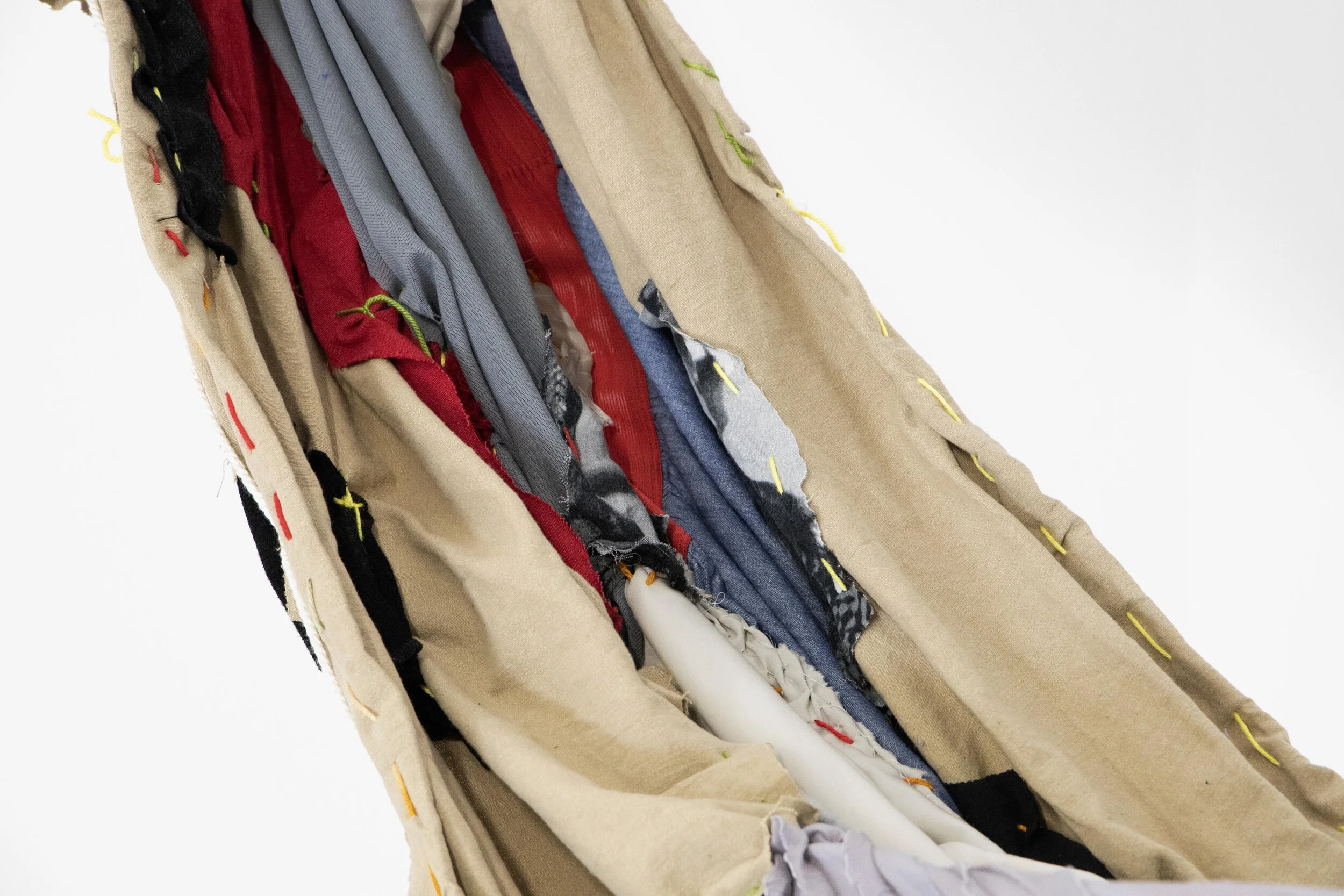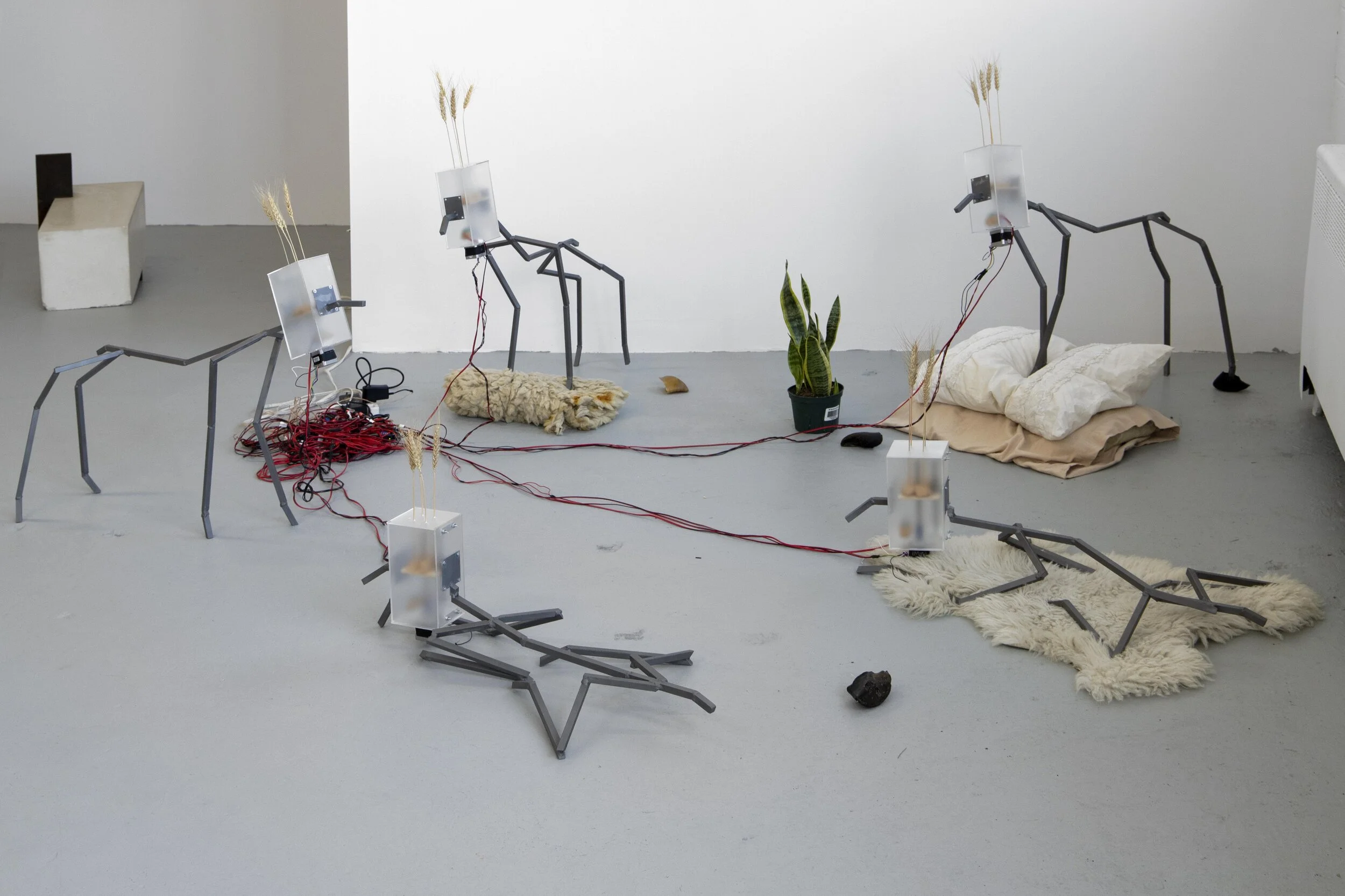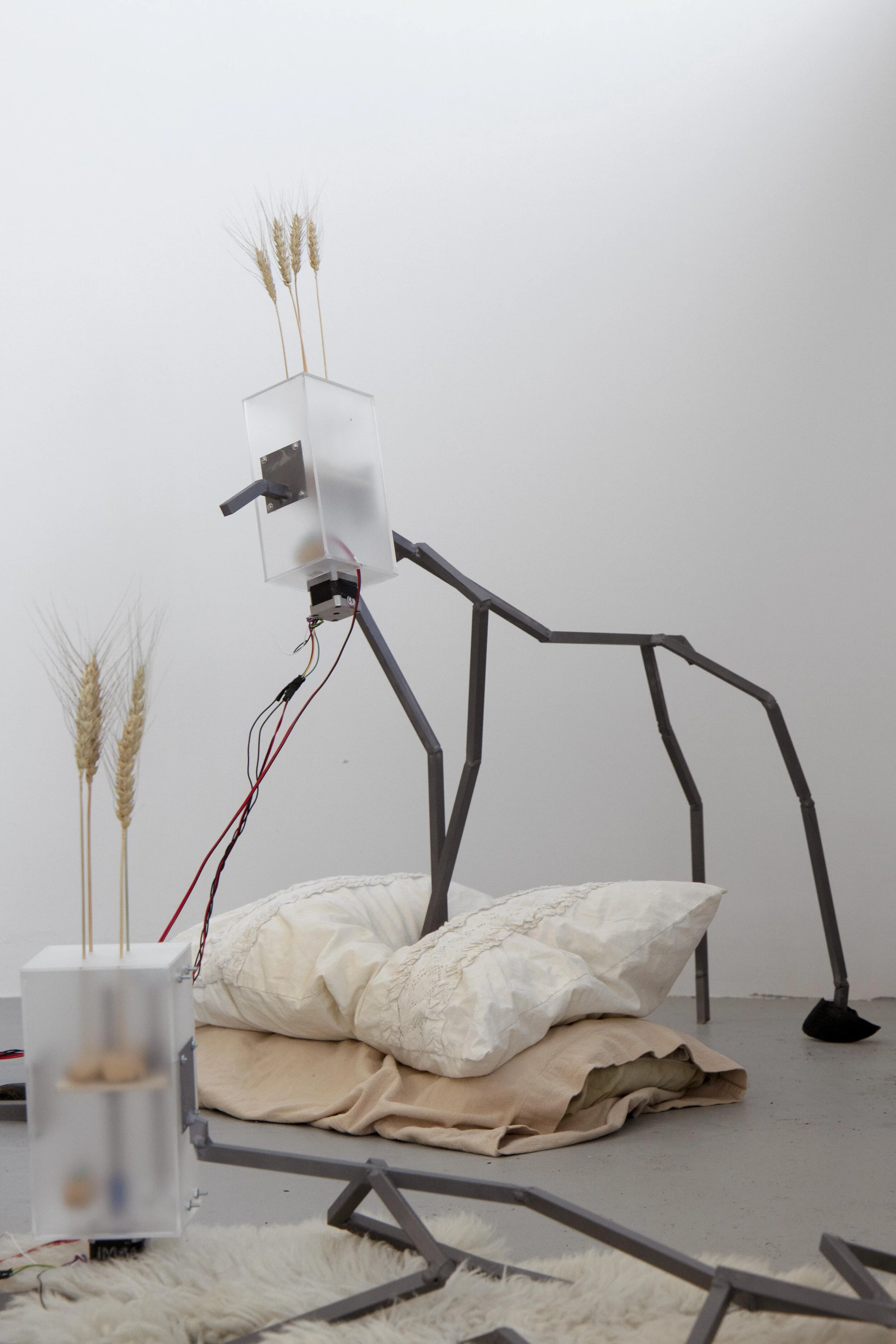Sweet Backpack Poetry 1
Sweet Backpack Poetry is a series of two exhibitions presented by students enrolled in advanced Sculpture classes at Concordia University.
The exhibiting artists are grateful to the Concordia Fine Arts Student Alliance (FASA), Concordia Council on Student Life (CCSL) and The Concordia University Alumni Association (CUAA) for the project funding awarded to this exhibition series.
All Exhibition Photos by Brandon Brookbank.
Exhibition Essay
The title for Sweet Backpack Poetry, a group exhibition by twenty-three undergraduate Sculpture students from Concordia University, was chosen via a game of exquisite corpse. This collective game of chance was an appropriate device for a show that concluded an academic year in which so much was determined by forces beyond any of the participants’ control. The Coronavirus pandemic has enforced a shared context of experience that overrides any of the factors of influence that one normally expects in the course of art school, a common denominator that unites the works in this show despite the fact that most of the artists involved have only ever interacted via Zoom classrooms and only met their instructors in person during the process of installing this exhibition, if at all.
Sweet Backpack Poetry, then, nods to the ephemeral and nomadic nature of the host gallery, Soft Square, as well as to notions of change, adaptability, and resilience, along with the fact that many students had to transport their work to the gallery themselves, often in actual backpacks (the installation was carried out by instructors Juan Ortiz-Apuy and Kelly Jazvac according to students’ instructions). As one artist commented, “I think it’s a nice testament to the spontaneity required to create art in an academic setting through the pandemic; chaotic, strange but still somehow hopeful.”
Many of the works involved emerged from and speak (though often indirectly) to the drastic impact of the pandemic and the limitations it imposed: on social connection and interaction; on studio space (many participating artists reported working at home, in their living space, or outdoors); and on access to tools, materials, and resources. Many students understandably chose to relocate away from Montreal during the term, and even those who remained close to the university were only able to access specialized workshops, fabrication, equipment, or training via limited appointments, forcing many to experiment on their own. Nevertheless, some students recounted finding solutions in collaboration, cooperation, and mutual aid, getting assistance, transport, materials, and supplies free or on loan from classmates and strangers.
Despite the exhibition’s open framework and absence of curatorial intervention, it is easy to trace certain commonalities among the included works. There was a preponderance of found, foraged, recycled, and reclaimed objects (often perishable or organic), and an emphasis on hands-on and materials-based processes. Viewers encountered an ethos of making do with what’s at hand, of meaningful gestures and care for objects related to personal histories and memories, a general attitude of being led by intuition rather than a plan. One student listed keywords including “archive, observance, care, curiosities, crafting.” Insofar as discourses of materiality, care, and precarity were already current in contemporary art, the pandemic seems to have redoubled the emphasis, exposing neoliberal capitalism’s gaping fissures even more nakedly than before.
Among the works on display, there was a general absence of high-tech materials and precision techniques, and those that did employ kinetic elements including motion, light, and sound did so in a comic and absurd register that in some cases shaded into a low-tech sci-fi/horror grotesque. There were also a handful of pieces that could be called dioramas (a fairly neglected form in recent sculpture), notable in that they seemed to affect a pantomime of social interaction as something rendered strange, awkward, even horrifying—how many of us have forgotten how to be “normal” in the company of others?
Overall, the exhibition testifies eloquently—even yes, poetically—to the challenges of producing art in this uncanny lacuna period in which the overarching frame of the international contemporary art world, writ large, has felt strangely absent or unreal, forcing a turn towards inwardness and immediate circumstances. The uncertainty about what sort of art world will return post-pandemic, even a kind of crisis of faith, was also palpable in aspects of this show. At the same time, the resourcefulness and resilience on display were heartening. The “sweet” part of Sweet Backpack Poetry lies in its apparent hopefulness for the future, the promise, as one artist put it, “of better days, an idea of care and comfort that could still be found through art of mutual help.”
Text by Saelan Twerdy.



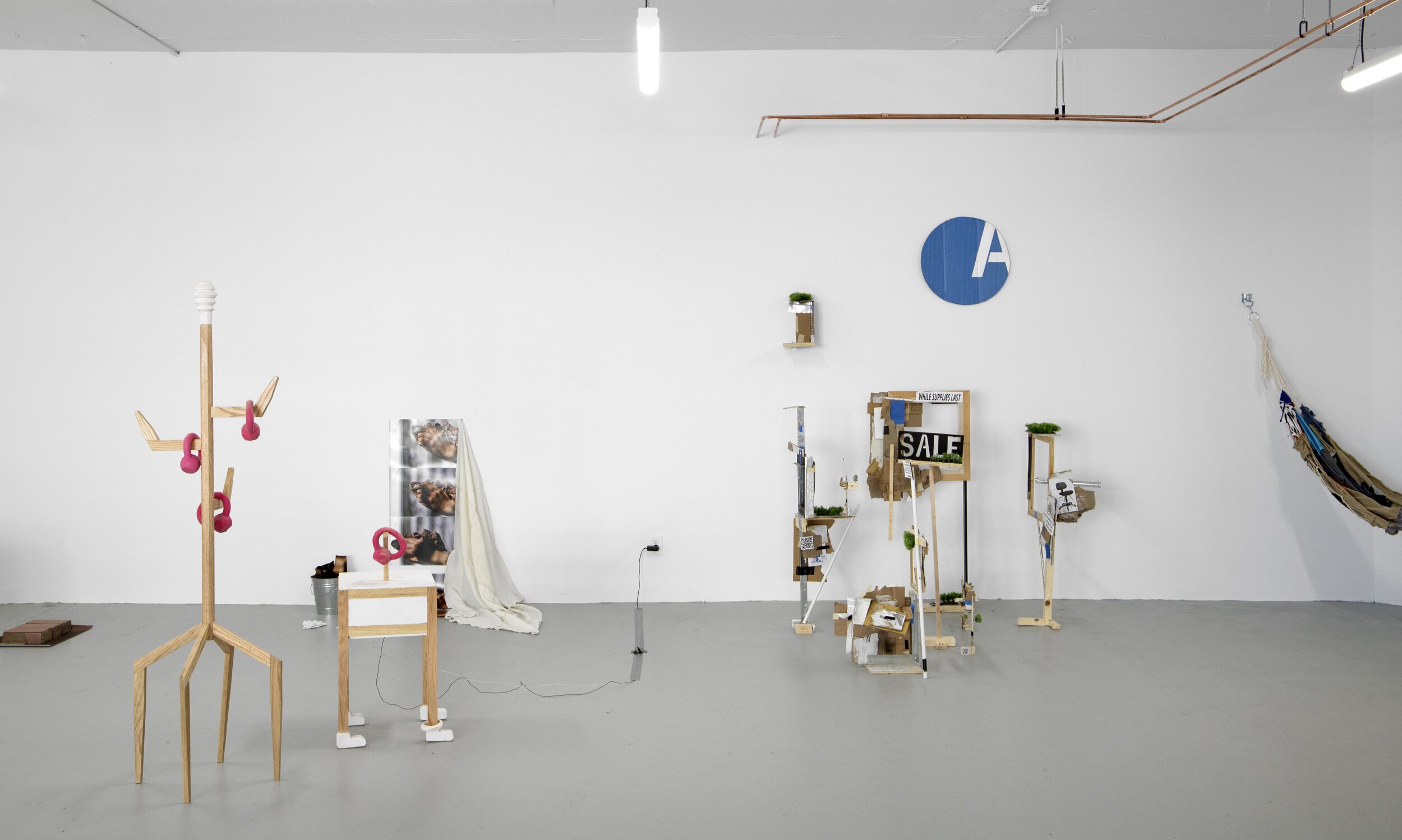
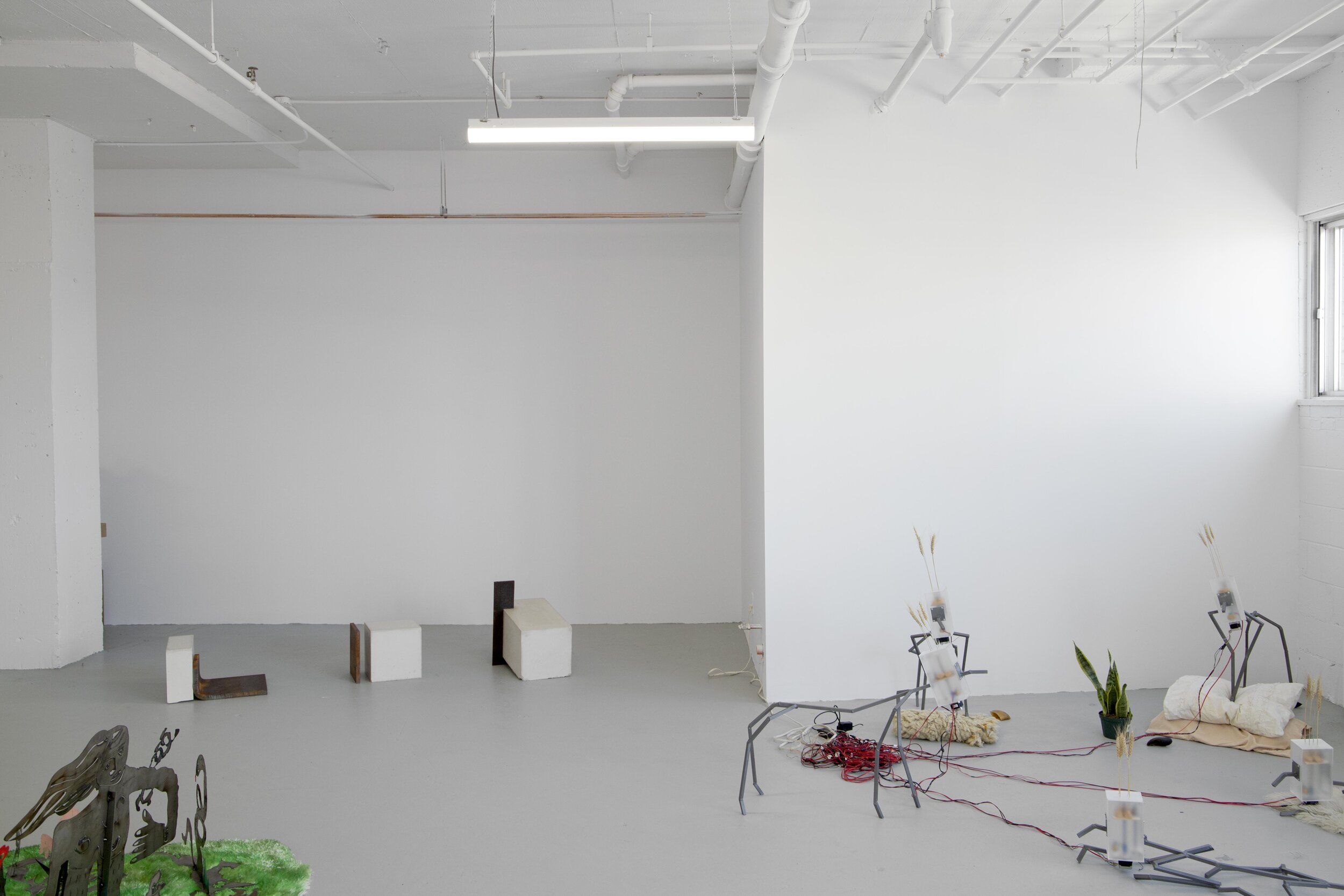

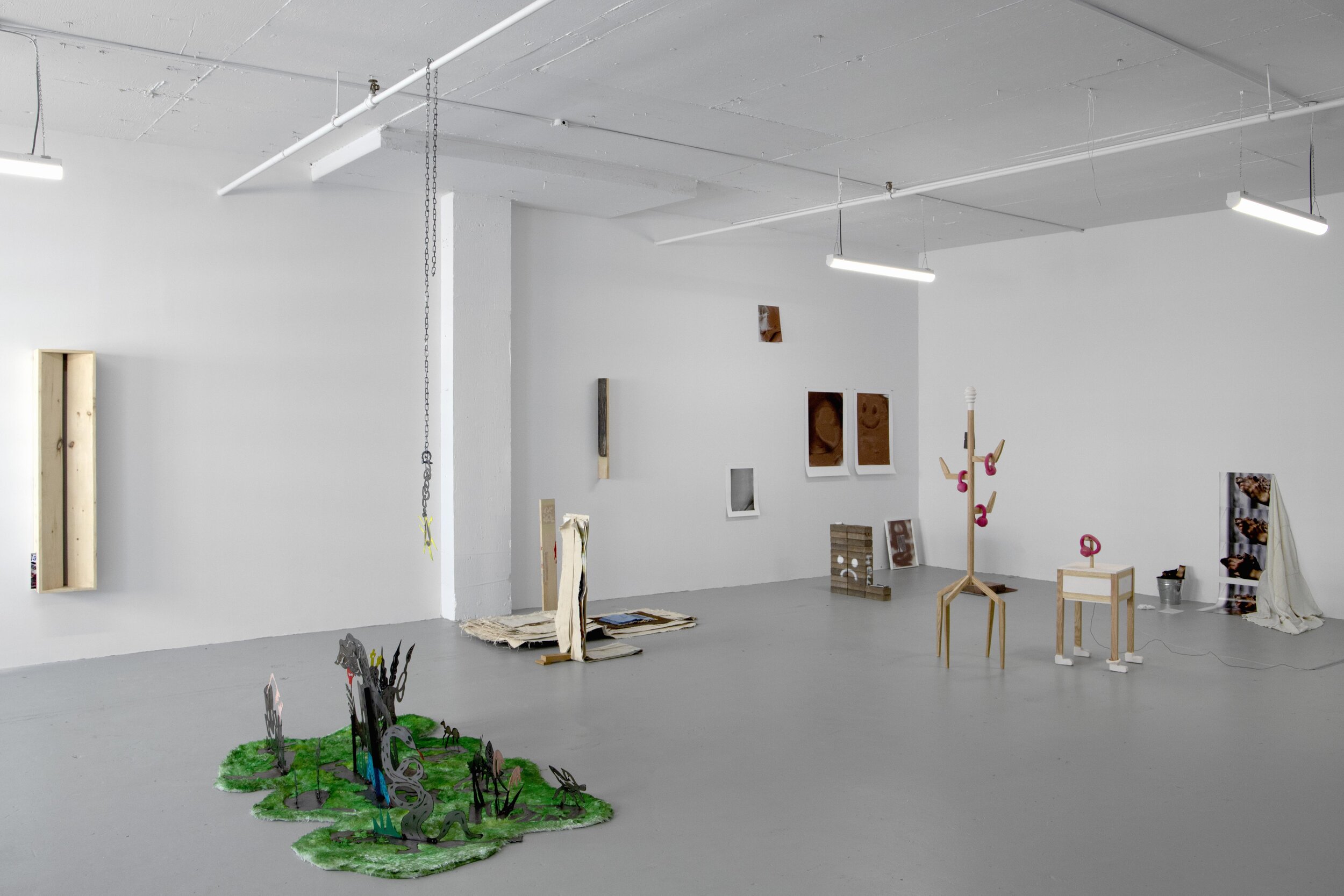

Participating Artists
Alexandre Bouffard / Catherine L. Forest / Colin Courtney / Emiliano Moreno Quesada / Jessica Benavidez / Julie Robert / Rafa Santos / Simon Bouthillier / Theo Leimgruber / Thomas Hagen-Veilleux / Vanessa Rosales-Castro / Xavier Beldor
Enter Exhibition
↓
Alexandre Bouffard, Slit, wood, self-published book
Alexandre Bouffard’s work addresses our relationship to information and knowledge as it is transformed by the rapidly evolving means of communication and digital archiving. His work compiles a broad array of historical references, spanning from political writings to architectural elements as they are both mediated though digital formats. Usually taking the form of an installation, Bouffard investigates the material repercussions ensuing from the circulation of digital information as well as surrounding issues in regards to domesticity, privacy, automation and transparency.
Alexandre Bouffard (b.1998, Montreal) lives and works in Montreal and is currently completing a BFA at Concordia University
Catherine L. Forest, La femme de fer and her open garden, metal, rug, spray paint, acrylic and chains
Catherine Labrie-Forest is originally from Montreal where she grew up in the Laurentian region suburbs. In May 2018, she graduated in Visual Arts at Cégep du Vieux Montréal, where she also won the 29th Intercollegiate Visual Arts award for her work L'Olympia actuel ou Madame de Récamier (as you wish). Now in her second year of her bachelor's degree in Studio Art at Concordia University, she experiments with different materialities by always bringing the spirit of collage into her work. Through this process, fragments of intimacy and an evocation of childhood are recalled like a small introspective voice that is impossible to silence.
The artist works under a whimsical air, with ever-present ideas of small treasures alleviating loneliness; the making of a "home" as a survival material; and the tender need to build an inner house with all one's precious belongings.
Colin Courtney, Algal Bloom, assorted glass vessels, active green algal cultures, mirror, steel raft, pond water, sunlight
Collin Courtney is an artist working between disciplines of video, sculpture and painting. He has been living and working on the island of Tiohtià:ke/Montreal since 2017. Through observation or research-based curiosity, his approach is that of a collaborator with objects' inherent properties. Site-based learning blends into studio-lab experiments. Tests, creative play, and durational observation assist curious inquiries into the agency of existent or human-made matter. With an oppositional stance to the idea that nature is a thing to be controlled or dominated, the inherent activities of objects or organisms are encouraged within creative parameters. His work has been exhibited within Canada and the United States at venues such as The Grand Rapids Public Museum Planetarium (MI), The University of British Columbia (Vancouver), and Art Mûr (Montreal).
In Courtney’s Algal Bloom, the single-celled green algae organisms contained in the vessels reproduce with the help of sunlight through photosynthesis. They asexually reproduce at different speeds and frequency, splitting or fragmenting themselves until the vessel’s water reaches an opaque hue of green.
Emiliano Moreno Quesada, Clay Play V2, clay, bricks, digital photographs, paint frame, flocked toy
Emiliano Moreno Quesada is an artist working in installation, photography, printmaking and sculpture. Born in Mexico City and raised in Canada, he is based in Thiotià:ke (Montreal) where he is completing his BFA in Studio Arts at Concordia University. His work is a constant dialogue between sculpture and photography, and he is interested in working with the dualities of design and art. Often Moreno Quesada uses found and industrial objects such as concrete, steel and bricks in order to create a recognizable vocabulary of material that is both banal and modern.
Clay Play V2 is an installation that explores the materiality of clay through a digital lens. Using a flatbed scanner and clay bodies, he creates images that act as imprints of the material. The work is based in play and spontaneity, attempting to find the limits of clay and how it behaves –and what it signifies— when digitized. Ultimately, this work aims to investigate the conflict between nature and technology as well as preservation and ephemerality.
Jessica Benavidez, A Blithe Disregard for the Stifled Polymer Clay, cardboard, mirrors, burlap, lights, sound box
Jessica Benavidez was born in Brampton, Ontario and grew up with a large family in the small, wooded town of Grenville-sur-la Rouge, Quebec. In May 2019 she graduated from John Abbott Cégep with a DEC in Visual Arts and is currently completing her second year of her bachelor’s degree in Studio Art at Concordia University. She combined her fascination with horror and her love of the whimsical to bring the worlds and characters that live within her mind into physical reality.
Benavidez often experiments with contrasts of dismal subject matter with materials often used by children. The duality between horror and zany come together to form curious narratives from other worlds.
Julie Robert, Noue, cement, sand, aggregate, raw steel and polystyrene
Julie Robert is a multidisciplinary artist based in Montréal. She is the Winner of a public art competition from the city of Beloeil, QC. Julie’s sculpture, Point Pivot, commemorates the 99 victims of Canada’s worst ever railway disaster, when a train plunged from a swing bridge into the Richelieu River. Installation spring 2021.
Robert draws from formal elements associated with minimalism. Using raw materials related to construction, she connects the materiality and the basic geometric shapes of modern architecture to political, historical and emotional events in relation to lived experiences, to illustrate the singularity of connections or moments in a given space.
Rafa Santos, Alive in the Grave of the Republic, canvas, thread, metal, wood, shop towels, ink, pencil, charcoal
Based in Montreal, Rafa Santos was born in 1997 in Scarborough, Toronto. Throughout their BFA at Concordia University, they have cultivated an interest in the linear and spatial potential of drawing and sculpture. Postminimalist in their aesthetic, abstraction dominates representation. Santos’ focus is to address the subject of identity with both a private and a public voice at once.
Alive in the Grave of the Republic. The soul was a designated structure for meetings of memory, feeling and creation, located in an area now called the mind. The site was excavated by order of the dictator the artist. For the most part, only the foundations of the original structure have been excavated and suspended gestures and hollow volumes are now raised above the remains of the soul. It was announced that further excavations had uncovered the precise spot of inspiration’s death (later to be the site of its resurrection), marked by art within the building before its destruction.
Simon Bouthillier, This Side Up, wood, metal, cardboard, acrylic, charcoal, graphite, masking tape, ink paper, spray paint, plastic plants
A second year student in Studio Arts at Concordia University, Simon Bouthillier creates work that walks a line between painting, drawing and sculpture. He uses found objects and assembles them with a particular attention to materiality, recurrent symbols and color schemes. This Side Up is a multi-faceted installation that deals with the topic of the commodification of art through references to branding, the art market and consumer culture. The sculptures speak to the viewer, advertising themselves as marketable art objects. The installation incorporates a digital aspect by the use of a QR code leading to a social media page.
Theo Leimgruber, Untitled, oak, plywood, silicone and motor
Living in Montreal, Theo Leimgruber is a sculptor working mostly with wood and electronics. After finishing his bachelor’s degree, Leimgruber will pursue his woodworking interests by attending l’école des métiers du meubles.
The artwork included in Sweet Backpack Poetry consists of two objects: one reminiscing of a coat hanger and the other a night table. The artwork is concerned with the liveliness of everyday objects and humans’ relationship with them. It explores these concerns through strategies of technology absurdism and anthropomorphism.
Thomas Hagen-Veilleux, Filth is a small disciple, inkjet prints, cloth, book, exfoliant gloves, bucket
Thomas Hagen-Veilleux is a multidisciplinary artist whose work looks at how bodies and sounds coalesce with architecture in both structural and atmospheric ways – more importantly, how either works to orient the other. Using poems and language, Hagen-Veilleux thinks about what appears in simple processes in order to stay open, often mapping out something intimate in hopes of reaching something more expansive.
Filth is a small disciple is a project that considers how our ways of cleaning generate poetic methods for understanding space. This series of photos and sculptural interventions pauses on routine -like behaviour as a way to reflect on the intimacy that occurs when we lean in to take care of our environments.
Vanessa Rosales-Castro, Bonds, Fabrics, yarns, cottons
Vanessa Rosales-Castro's work borrows themes from the body, transformation, and the environment to explore different ways of interpreting these subjects and discussing their visual and material manifestations. Fascinated by a range of mediums, she works in painting, drawing, sculpture and digital media. Her project, Bonds, is about community and interrelationships. It is a personal and at the same time collective work based on the sharing of feelings, interests and lived experiences from each of the participant's life. An idea represented in the thread that supports and bonds.
Xavier Beldor, Pastoral Dystopia, metal, Plexiglas, hooves, sheepskin rug, wheat, pillows, arduinos, stepper motor, linear bearings
Born in Quebec City, Canada, Xavier Beldor studies in Studio Art at Concordia University in Montreal. His work has been included in juried exhibitions at different venues including Studio XX and the Darling Foundry. In 2019, he was awarded the Ellen Battel Stoeckel Fellowship to study at the Yale Norfolk School of Art. He currently lives and works in Montreal.
Beldor’s project Dystopie Pastorale explores the relationship between digital media’s metaphors for data analysis and the pastoral genre in art. Tech terms such as “data harvesting,” “data farming,” “clouds,” and “data mining” recall a pastoral lexicon: one that points to agricultural activities, and more broadly, to the relationship between humans, animals, and nature. As the COVID-19 pandemic has reconfigured social and material environments into virtual ones, this sound and kinetic installation explores how the return of this pastoral vocabulary could affect our collective imagination.

